
Home » Blog » Bluewater sailboats » The best bluewater sailboats (we analyzed 2,000 boats to find out)

The best bluewater sailboats (we analyzed 2,000 boats to find out)
By Author Fiona McGlynn
Posted on Last updated: May 16, 2023
We analyzed two-thousand bluewater sailboats to bring you a list of proven offshore designs
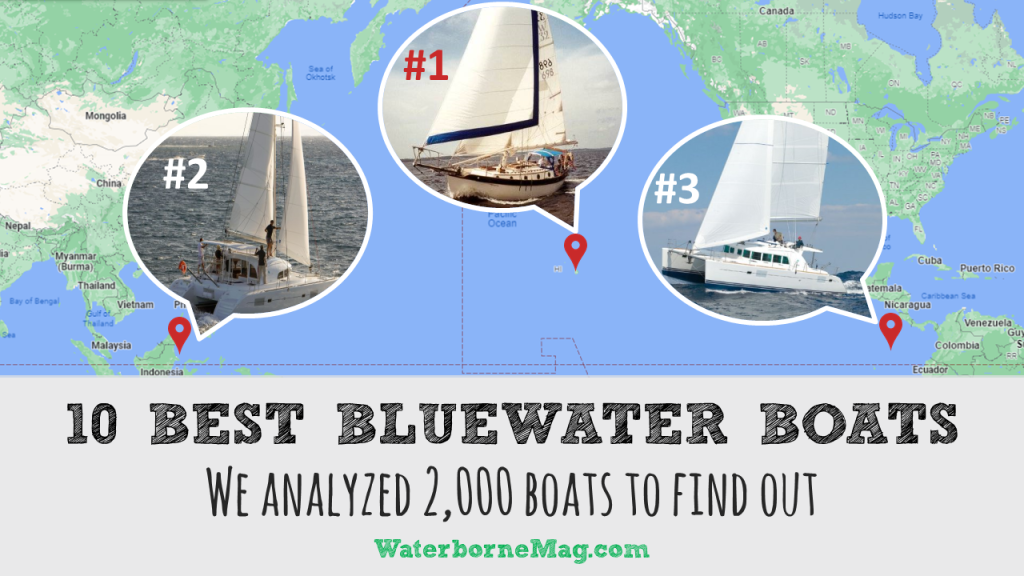
What are the best bluewater sailboats?
This was a question we asked a lot of experienced cruisers when we decided to sail across the Pacific. We needed a boat after all, and we wanted to buy the best bluewater sailboat we could afford.
We heard a lot of strong opinions.
Some sailors thought it was reckless to go offshore in any boat that didn’t have a full keel.
Others prioritized performance, and wouldn’t dream of going anywhere in a slow boat like the Westsail 32 (a.k.a. a “Wet Snail 32”).
Opinions like these left us feeling confused like we had to choose between safety and performance.
If we learned anything from these conversations, it’s that what makes a bluewater boat is a hotly debated topic!
However, there’s a way to cut through all the opinions and get to the bottom of it. The solution is….
We analyzed just under 2,000 boats embarking on ocean crossings (over a 12 year time period) and came up with a list of the ten best bluewater sailboats.
Where did we get our data?
The data for our best bluewater sailboats list comes from 12 years of entries in the Pacific Puddle Jump (PPJ), an annual cross-Pacific rally. We took part in 2017 and had a ball!
You can read about the methodology we used to analyze this data at the bottom of the post.
What do we mean by “best”?
We know, that word is overused on the internet!
Simply, based on our data set, these were the most common makes and models entered in the PPJ cross-Pacific rally. There were at least 10 PPJ rally entries for every make of boat on our top 10 list.
So, these boats are 100% good to go?
No! A bluewater boat isn’t necessarily a seaworthy boat. Almost every cruiser we know made substantial repairs and additions to get their offshore boat ready, adding watermakers , life rafts, solar panels, and more.
Also, you should always have a boat inspected by a professional and accredited marine surveyor before buying it or taking it offshore.
But my bluewater baby boat isn’t on this list!?
There are hundreds of excellent bluewater yachts that are not on this list. For instance, we sailed across the Pacific in a Dufour 35, which didn’t even come close to making our top 10 list.
Choosing the right boat is very much an individual journey.
Where can I find these bluewater boats for sale?
We recognize that a top 10 list won’t get you very far if you’re shopping for a bluewater boat (especially if you’re looking in the used market).
So, to help you find your perfect boat, we’re going to create a big list of bluewater boats that you can use to refine your search on Yachtworld, Craigslist, or any other places to buy a used boat .
Sign up for our newsletter to get our big list of bluewater boats list as soon as it comes out.
We’re also working on a series of posts by size class. For example, if you’re looking for a smaller boat, you can narrow it down to the best bluewater sailboats under 40 feet .
Takeaways from our analysis
There were no big surprises on an individual boat level. All of these makes are considered good cruisers, some of them are even best-selling designs! However, there were a few things that caught our eye.
“Go simple, go small, go now” still holds water
We were thrilled to see the smallest boat in our roundup at the very top of the list! Westsail 32 owners can take pride in their small but mighty yachts (and ignore all those snail-sayers).
While undoubtedly there’s been a trend towards bigger bluewater cruisers in recent years, small cruising sailboats seem to be holding their own. 60% of the monohulls on this list were under 40 feet (if you count the Valiant 40 which sneaks just under at 39.92 feet).
Cat got our tongue
So, we knew catamarans were a thing, but we didn’t fully appreciate HOW popular they’d become!
50% of our top 10 bluewater boat list consists of catamarans—a good fact to toss out the next time you’re trying to garner a happy hour invite on the party boat next door (which will undoubtedly be a catamaran).
Still got it!
We’ve got good news for all you good old boat lovers! 60% of the boats on our list were first built before 2000.
While these older models are less performance-oriented than modern designs, cruisers value these boats for their ability to stand up to rough seas and heavy weather. It just goes to show that solid bones and classic looks never go out of style.
Alright, without further ado, let’s dive into our list of the 10 best bluewater boats!
The 10 best bluewater boats
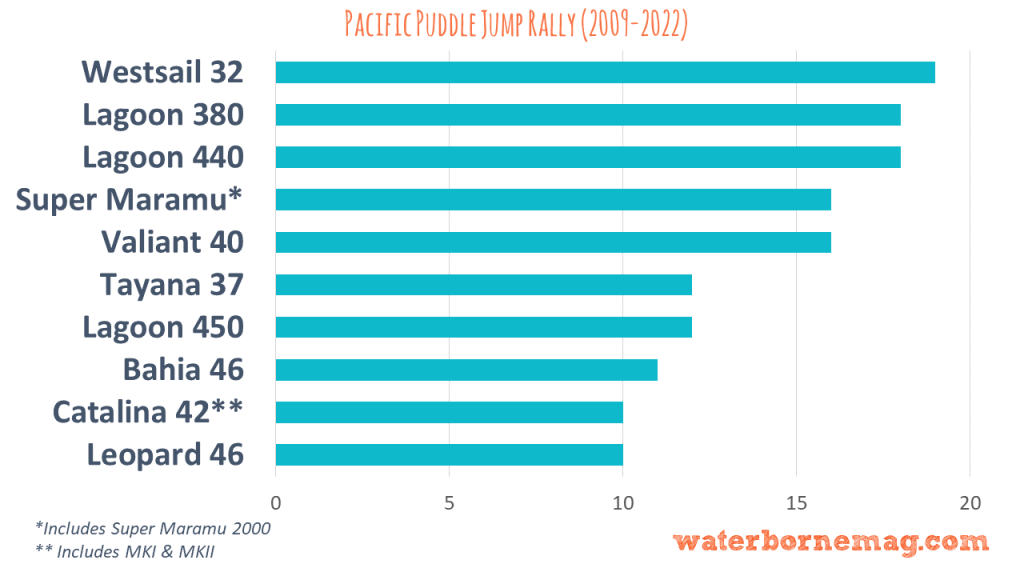
1. Westsail 32
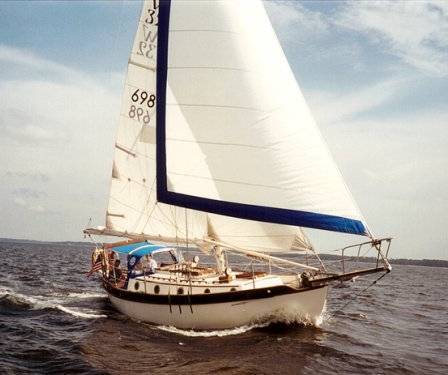
The Westsail 32 is one of the most iconic bluewater cruisers and 19 have set out to cross the Pacific in the PPJ rally since 2009.
In 1973, this small cruising sailboat garnered a 4-page spread in Time magazine. The article inspired many Americans to set sail and the Westsail 32, with its double-ender design, set the standard for what a real bluewater cruiser should look like.
There were approximately 830 built between 1971 and 1980.
This small boat has taken sailors on ocean crossings and circumnavigations. Though considered “slow” by some, the heavily-built Westsail 32 has developed a loyal following for her other excellent offshore cruising characteristics.
If you’re interested in small bluewater sailboats, check out our post on the best small sailboats for sailing around the world .
| LOA | 32.00 ft / 9.75 m |
| First built | 1971 |
| Builder | Westsail (USA) |
| Designer | W. Crealock / W. Atkin |
| Hull type | Long keel, trans. hung rudder |
| Rig type | Cutter |
| Displacement | 19,500 lb / 8,845 kg |
2. Lagoon 380
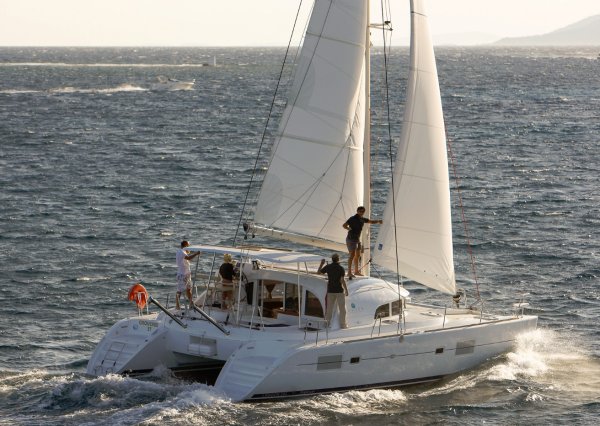
The Lagoon 380 is a reliable, solidly built catamaran and considered roomy for its size. We counted 18 of them in our data set. With over 800 boats built , it may be one of the best-selling catamarans in the world. Like the other boats on this list, the Lagoon 380 has proven itself on long passages and ocean crossings, winning it many loyal fans.
| LOA | 37.89 ft / 11.55 m |
| First built | 2000 |
| Builder | Jeanneau (FRA) |
| Designer | V. Peteghem / L. Prévost |
| type | Cat. twin keel |
| Rig type | Fractional sloop |
| Displacement | 16,005 lb / 7,260 kg |
| More specifications |
3. Lagoon 440
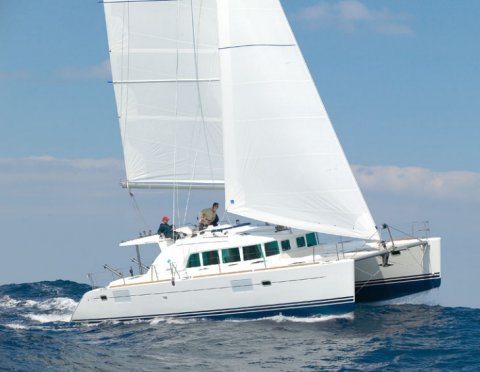
18 Lagoon 440s have set out to cross the Pacific in the PPJ rally since 2009.
Why leave the comforts of home, when you can take them with you? The Lagoon 440 is a luxurious long-range cruiser, offering beautiful wood joinery, spacious accommodations, and a deluxe galley. Oh, and you have the option of an electric boat motor !
SAIL and Sailing Magazine have both done in-depth reviews of the Lagoon 440 if you want to learn more.
| LOA | 44.65 ft / 13.61 m |
| First built | 2004 |
| Builder | Lagoon (FRA) |
| Designer | V. Peteghem / L. Prévost |
| Hull type | Cat. twin keel |
| Rig type | Fractional sloop |
| Displacement | 26,786 lb / 12,150 kg |
4. Amel Super Maramu (incl. SM 2000)
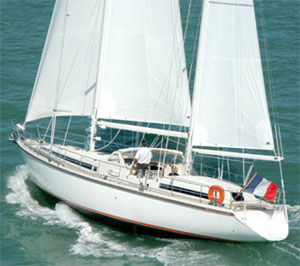
If you follow the adventures of SV Delos on YouTube, you probably know that the star of the show (SV Delos— in case the title didn’t give it away ) is an Amel Super Maramu. These classic bluewater sailboats can be found all over the world, proof they can go the distance.
We counted 16 Amel Super Maramus and Super Maramu 2000s in our list of PPJ entries.
Ready to join the cult of Amel? Read more about the iconic brand in Yachting World.
| LOA | 52.49 ft / 16.00 m |
| First built | 1989 |
| Builder | Amel (FRA) |
| Designer | H. Amel / J. Carteau |
| Hull type | Wing keel |
| Rig type | Masthead ketch |
| Displacement | 35,274 lb / 16,000 kg |
5. Valiant 40
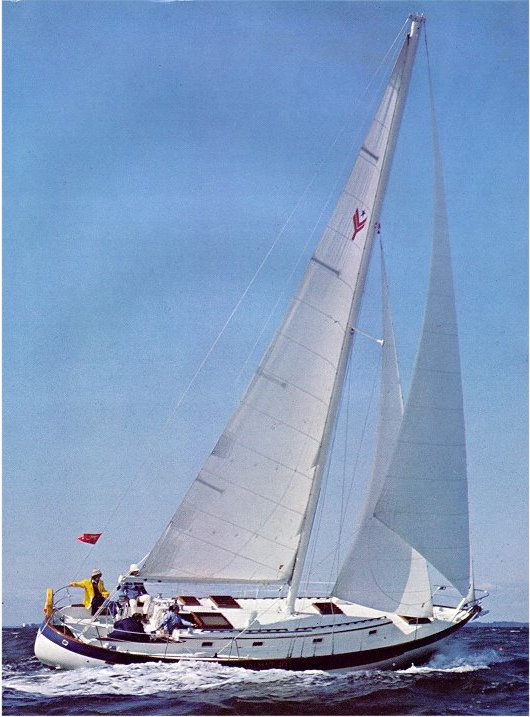
When I interviewed legendary yacht designer, Bob Perry, for Good Old Boat in 2019, he told me that the Valiant 40 was one of the boats that most defined him and marked the real start of his career.
At the time, heavy displacement cruisers were considered sluggish and slow, especially in light winds.
Perry’s innovation with the Valiant 40 was to combine a classic double ender above the waterline, with an IOR racing hull shape below the waterline. The result was the first “performance cruiser”, a blockbuster hit, with over 200 boats built in the 1970s.
It’s no surprise we counted 16 Valiant 40s in our data set.
Cruising World magazine dubbed it “a fast, comfortable, and safe cruising yacht,” and there’s no doubt it’s covered some serious nautical miles.
It’s worth noting that there were blistering problems with hull numbers 120-249 (boats built between 1976 and 1981). Later models did not have this problem. Despite the blistering issues, the Valiant 40 remains one of the most highly thought of bluewater designs.
| LOA | 39.92 ft / 12.17 m |
| First built | 1973 |
| Builder | Uniflite/Valiant (USA) |
| Designer | R. Perry |
| Hull type | Fin keel, rudder on skeg |
| Rig type | Cutter |
| Displacement | 23,520 lb / 10,668 kg |
6. TAYANA 37
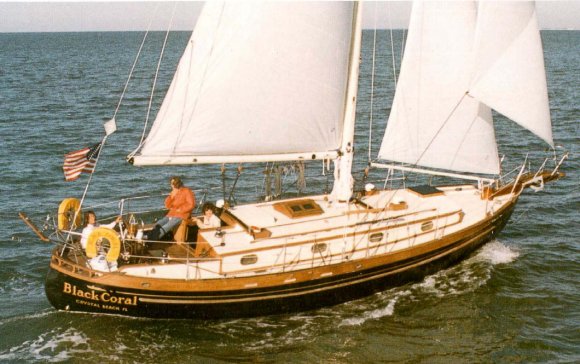
The Tayana 37 is another hugely popular Perry design. The first boat rolled off the production line in 1976 and since then, nearly 600 boats have been built. Beautiful classic lines and a proven track record have won the Tayana 37 a devoted following of offshore enthusiasts.
12 Tayana 37s have set out to cross the Pacific in the PPJ rally since 2009. Read more about the Tayana 37 in this Practical Sailor review .
| LOA | 36.67 ft / 11.18 m |
| First built | 1976 |
| Builder | Ta Yang (TWN) |
| Designer | R. Perry |
| Hull type | Long keel |
| Rig type | Cutter |
| Displacement | 22,500 lb / 10,206 kg |
7. Lagoon 450
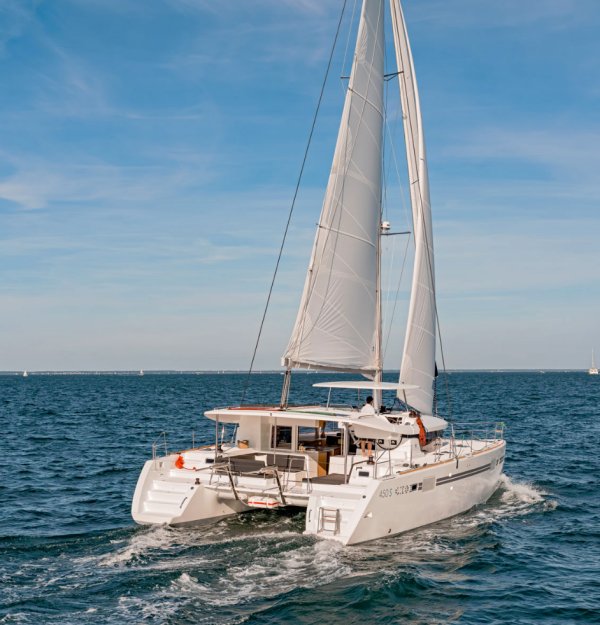
If this list is starting to sound like a paid advertisement, I swear we’re not on Lagoon’s payroll! This is the third Lagoon on our list, but the data doesn’t lie. Lagoon is making some of the best cruising sailboats.
The 450 has been a hot seller for Lagoon, with over 800 built since its launch in 2014. While not a performance cat, the Lagoon 450 travels at a reasonable speed and is brimming with luxury amenities.
At least 12 owners in the PPJ rally chose the Lagoon 450 to take them across the Pacific. It’s no wonder SAIL had so many good things to say about it.
| LOA | 45.80 ft / 13.96 m |
| First built | 2014 |
| Builder | Lagoon (FRA) |
| Designer | V. Peteghem / L. Prévost |
| Hull type | Cat. twin keel |
| Rig type | Fractional sloop |
| Displacement | 33,075 lb / 15,003 kg |
8. Fountaine Pajot Bahia 46
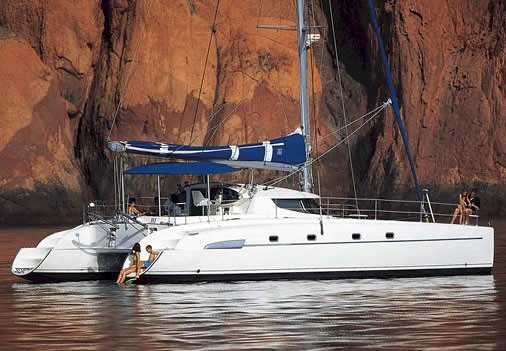
There were 11 Fountaine Pajot Bahia 46s in our data set.
Fountaine Pajot released the Bahia 46 in 1997, a sleek design for traveling long distances. Its generously-sized water and fuel tanks along with ample storage for cruising gear are a real plus for the self-sufficient sailor.
According to Cruising World , “Cruising-cat aficionados should put the Bahia 46 on their “must-see” list.”
| LOA | 46.10 ft / 14.05 m |
| First built | 1997 |
| Builder | Fountaine Pajot (FRA) |
| Designer | Joubert-Nivelt |
| Hull type | Cat. twin keel |
| Rig type | Fractional sloop |
| Displacement | 21,385 lb / 9,700 kg |
| See |
9. Catalina 42 (MKI, MKII)
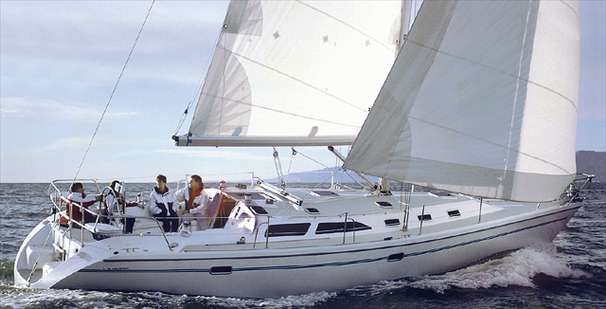
10 Catalina 42s (MKI and MKII) have set out to cross the Pacific in the PPJ rally since 2009.
The Catalina 42 was designed under the guidance of the legendary yacht designer and Catalina’s chief engineer, Gerry Douglas.
One of Catalina’s philosophies is to offer “as much boat for the money as possible,” and the Catalina 42 is no exception. According to Practical Sailor , Catalina aims to price its boats 15% to 20% below major production boats like Hunter and Beneteau.
Practical Sailor has a great in-depth review of the Catalina 42 .
| LOA | 41.86 ft / 12.76 m |
| First built | 1989 |
| Builder | Catalina (USA) |
| Designer | Catalina |
| Hull type | Fin keel, spade rudder |
| Rig type | Masthead sloop |
| Displacement | 20,500 lb / 9,299 kg |
10. Leopard 46
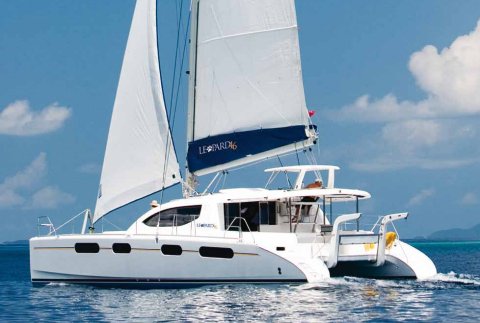
Since 2009, 10 Leopard 46s have embarked on Pacific crossings in the PPJ rally.
Leopards have won legions of fans for their high build quality, robust engineering, and excellent performance.
The Leopard 46 also boasts something of a racing pedigree. It was built in South Africa by Robertson and Caine and designed by Gino Morelli and Pete Melvin, who came up with the record-breaking catamaran Playstation / Cheyenne 125 .
Read more about the Leopard 46 in this Cruising World review .
| LOA | 46.32 ft / 14.12 m |
| First built | 2006 |
| Builder | Robertson & Caine (RSA) |
| Designer | Morelli & Melvin |
| Hull type | Cat. twin keel |
| Rig type | Fractional sloop |
| Displacement | 24,206 lb / 10,980 kg |
Methodology
What the data is and isn’t.
The PPJ data was a real boon because it reflects a wide range of cruising boats: small, big, old, new, expensive, and affordable. We think this may be because the PPJ is a very financially accessible rally—the standard entry cost is $125 or $100 if you’re under 35 (age or boat length!).
We did look at data from other (pricier) rallies but found that the results skewed towards more expensive boats.
Needless to say, the data we used is just a sample of the bluewater boats that crossed the Pacific over the last 10+ years. Many cruisers cross oceans without participating in a rally!
Entries vs. completions
The data we used is a list of the PPJ entries, not necessarily the boats that completed the rally. In instances where we saw the same boat entered multiple years in a row, we assumed they’d postponed their crossing and deleted all but the latest entry to avoid double counting.
Boat make variations
The world of boat building and naming can get pretty complicated. Sometimes a manufacturer changes a boat’s name a year or two into production, other times the name remains the same but the boat undergoes a dramatic update.
For the most part, we’ve used SailboatData.com’s classification system (if they list the boats separately, then we have also), except where there are two separately listed models that have the same LOA, beam, and displacement.
Fiona McGlynn is an award-winning boating writer who created Waterborne as a place to learn about living aboard and traveling the world by sailboat. She has written for boating magazines including BoatUS, SAIL, Cruising World, and Good Old Boat. She’s also a contributing editor at Good Old Boat and BoatUS Magazine. In 2017, Fiona and her husband completed a 3-year, 13,000-mile voyage from Vancouver to Mexico to Australia on their 35-foot sailboat.
Terms and Conditions - Privacy Policy
- Cruising Compass Media Advertising & Rates
- Blue Water Sailing
- Multihulls Today
- Subscribe Today

A Guide to 10 Great Blue Water Boats
Every veteran cruiser has his or her list of favorite cruising boats and, because cost is often an issue for many sailors, a lot of those boats will fall in the under-40-foot category. There are certainly many sweet designs under 40 feet that range from the venerable Crealock 37 to the futuristic Outremer 4x performance catamaran.
In the end, boats suitable for offshore sailing are sensible designs that will look after their crew in nasty weather, will survive an occasional grounding and will be capable of carrying enough stores for long passages and weeks off-the-beaten track.
And, it doesn’t matter if you choose a monohull or multihull; the right combinations of the above qualities can be found in both.
The gurus at Sail Universe decided to share their list of Best Boats Under 40 Feet recently and you can read the full story here.

You Might Also Like

- Lagoon Introduces New 60-Foot World-Girdling Family Cruiser

- Excess 13 Cruising Cat Design Launch Refines the Brand’s DNA

- Fountaine Pajot Introduces New Sustainable, Affordable 41-Foot Cruising Cat

Read the Summer-Fall Edition of Blue Water Sailing
Read the fall 2023 edition of blue water sailing, recent posts.

Please Visit Our Sponsor’s Webpages
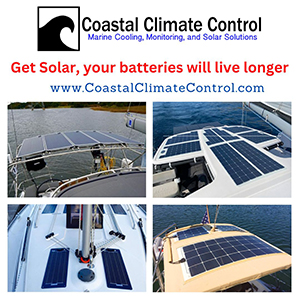
- Media Advertising & Rates
Published by Blue Water Sailing Media, a division of Day Communications, Inc., Middletown, RI
Publisher & Editor: George Day
Blue Water Sailing Media publishes Blue Water Sailing magazine, Multihulls Today and other titles.
Cruising Compass Advertising Sales:
George Day, Newport, RI [email protected] 401-847-7612
- Survey of the Week
© 2014 Blue Water Media. All rights reserved. | Admin
- New Sailboats
- Sailboats 21-30ft
- Sailboats 31-35ft
- Sailboats 36-40ft
- Sailboats Over 40ft
- Sailboats Under 21feet
- used_sailboats
- Apps and Computer Programs
- Communications
- Fishfinders
- Handheld Electronics
- Plotters MFDS Rradar
- Wind, Speed & Depth Instruments
- Anchoring Mooring
- Running Rigging
- Sails Canvas
- Standing Rigging
- Diesel Engines
- Off Grid Energy
- Cleaning Waxing
- DIY Projects
- Repair, Tools & Materials
- Spare Parts
- Tools & Gadgets
- Cabin Comfort
- Ventilation
- Footwear Apparel
- Foul Weather Gear
- Mailport & PS Advisor
- Inside Practical Sailor Blog
- Activate My Web Access
- Reset Password
- Customer Service

- Free Newsletter

Blue Jacket 40 Used Boat Review

Catalina 270 vs. The Beneteau First 265 Used Boat Match-Up

Ericson 41 Used Boat Review

Mason 33 Used Boat Review

How to Create a Bullet-Proof VHF/SSB Backup

Tips From A First “Sail” on the ICW

Tillerpilot Tips and Safety Cautions

Best Crimpers and Strippers for Fixing Marine Electrical Connectors

Polyester vs. Nylon Rode

Getting the Most Out of Older Sails

How (Not) to Tie Your Boat to a Dock

Stopping Mainsheet Twist

Fuel Lift Pump: Easy DIY Diesel Fuel System Diagnostic and Repair

Ensuring Safe Shorepower

Sinking? Check Your Stuffing Box

What Do You Do With Old Fiberglass Boats?

Boat Repairs for the Technically Illiterate

Boat Maintenance for the Technically Illiterate

Whats the Best Way to Restore Clear Plastic Windows?

Stopping Holding-tank Odors

Giving Bugs the Big Goodbye

Galley Gadgets for the Cruising Sailor

The Rain Catcher’s Guide

Sailing Gear for Kids

What’s the Best Sunscreen?

UV Clothing: Is It Worth the Hype?

Preparing Yourself for Solo Sailing

R. Tucker Thompson Tall Ship Youth Voyage

On Watch: This 60-Year-Old Hinckley Pilot 35 is Also a Working…

On Watch: America’s Cup

On Watch: All Eyes on Europe Sail Racing

Dear Readers
- Sailboat Reviews
Island Packet Yachts and designer Tim Jackett teamed up to create the Blue Jacket 40 performance-cruiser.

When classical musicians start playing rock and roll, fans take note. When their first song’s a hit, everyone listens to the lyrics. Bob Johnson, Bill Bolin, and the Island Packet Yachts (IP) crew have decades of experience delivering traditional cruisers to appreciative owners, but IP’s newest player has increased the tempo.
For more than 30 years, long keels, internal ballast, heavy displacement, attached rudders, a beige hull, and a headsail-handling, self-tacking jib boom have defined the Island Packet fleet. But when the IP crew teamed up with performance-oriented designer Tim Jackett, all bets were off, and the switch from perpetual beige to a dark blue hull was just the beginning.
Starting with a clean slate, the collaborative design effort led to the launch of a very different cruiser. Creator of many C&C Yachts and Tartan Yachts designs, Jackett puts more emphasis on light-air sailing and upwind performance than past IP designers. Island Packet founder Bob Johnson made sure that the accommodations worked at anchor and at sea. At times, the dialogue was probably filled with internecine debate over issues ranging from foam core choice to the need for solid acrylic countertops. But the quest stayed focused on a best-of-both-worlds sailboat, and at first glance, the rig dimensions, no-nonsense deck layout, comfortable interior, and efficient hull/deck proportions seem to have hit the mark.
Built in IP’s Largo, Fla., facility, the Blue Jacket 40 (BJ40) is an Island Packet cousin with fleeting family resemblance. The title block attributes the design to the complementary tag team of Tim Jackett and Bob Johnson N.A. By the time the development was complete, the traditional Island Packet’s long keel had morphed into a fin and bulb (5 feet, 9 inches or 7 feet, 10 inches), a couple tons of weight had been shed through a commitment to using Divinycell foam core and resin-infused FRP hull and deck construction; less ballast was used more efficiently. Island Packet’s signature attached rudder was eschewed in favor of a high-aspect-ratio spade rudder, while another IP badge, the self-tacking Hoyt jib boom, survived the design overhaul.
DESIGN DEVELOPMENT
Jackett was the lead proponent for change and had hold of the tiller during the hull design development. Much of his ground-breaking prior success revolved around adding a performance edge to mainstream cruising boats. During his tenure as president and lead designer at Tartan and C&C, Jackett focused on building club racers that could handle a little cruising and cruisers that had enough rig and sail area to put the pleasure of performance back in the game. When the opportunity arose, Johnson and Jackett considered collaborating on a performance cruiser as an adjunct to the Island Packet lineup. Jackett envisioned a moderate, wedge-shaped canoe-body hull with a long waterline, plumb bow, and enough dead rise (V-shape) forward to smooth out the ride and lessen the slamming found aboard more extreme race-boat hull shapes.
When the collaboration began in earnest, the goal was to reduce weight and increase sail area while engineering to Category A (Ocean) CE standards. Johnson has played a key role in the development of CE standards and is quick to point out the value of minimizing down-flooding potential, maximizing righting moment when deeply heeled, and delivering a stable boat. The Blue Jacket 40 carries a CE Stability Index (STIX) number of 40, well into the A category, which begins at 32. Add to this the well-engineered approach to construction, and its clear that a firm foundation has been laid for an able under-sail, seagoing cruiser.
CONSTRUCTION
To build the Blue Jacket 40, the IP factory adopted the resin infusion and foam core construction approach. A low-void content, high fiber-to-resin ratio laminate was achieved by vacuum infusing vinylester resin into the biaxial and quadraxial e-glass reinforcement, creating a stiff, strong, foam sandwich structure. Both the hull and the deck were laminated in one-part molds, eliminating secondary bonds. The core was tapered to solid fiberglass in high-load areas such as where hardware attachments were made or keel-bolt loads were focused. A big upside to resin infusion is the way it forces resin into kerfs (checkerboard-like slots in the foam), allowing it to conform to compound curves.
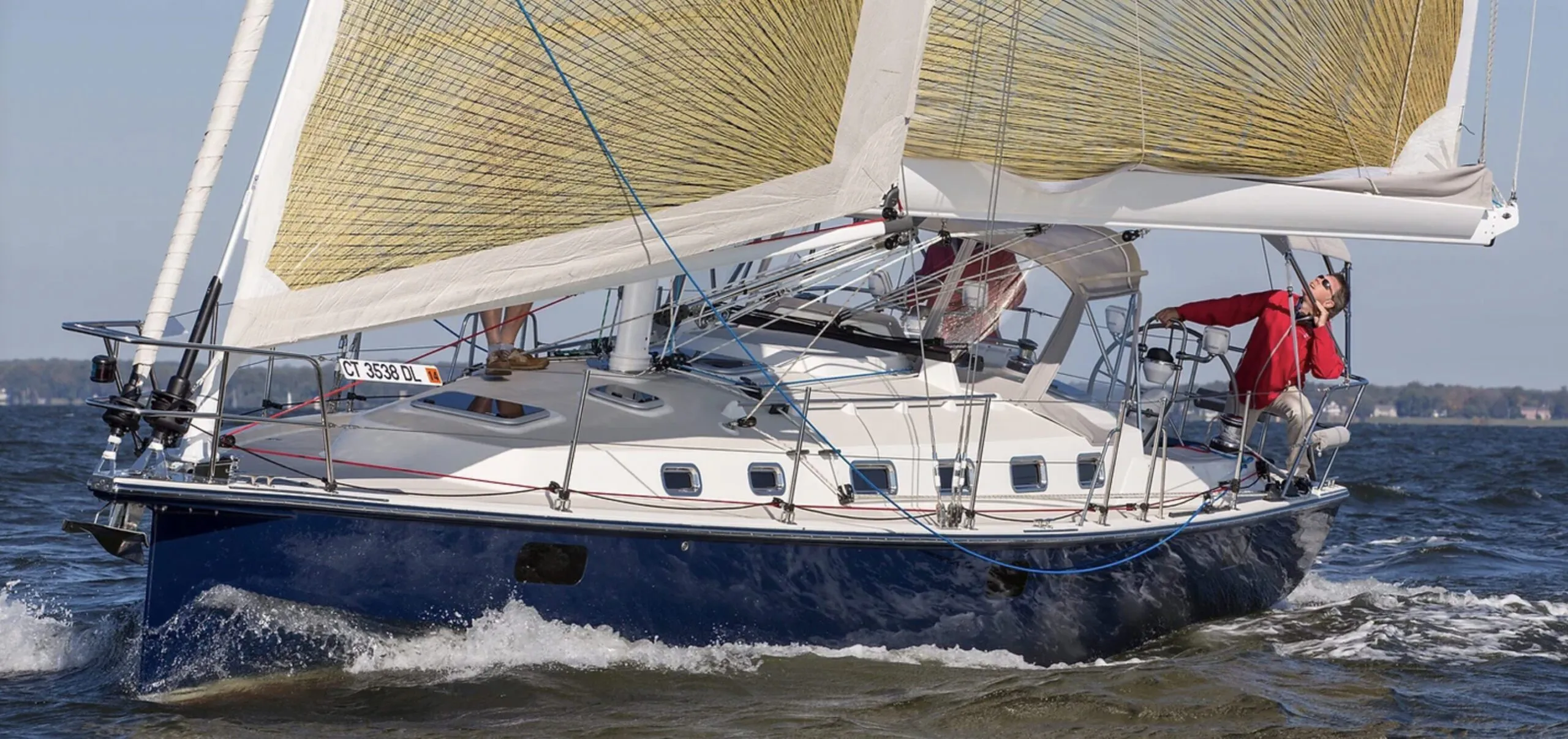
Instead of encapsulating ballast in a long run of keel, a well-proven Island Packet approach, the new design called for external lead ballast, which offers several advantages to the cruising sailor (PS, November 2012). The fin and bulb design developed more righting moment with less ballast by placing much of the lead in an anvil-shaped bulb at the very tip of the NACA foil-shaped keel. J-shaped, stainless-steel keel bolts were cast into the lead and bolted to a grid bonded to the inside the hull. This fiberglass (fiber-reinforced plastic, or FRP) framework spread the lever-like keel loads over a much larger section of the hull.
The rudder is one of the three key elements attached to the hull and deck. And like the other two—the rig and the keel—the attachment needs to be well engineered and equally well constructed. The higher the aspect ratio of these appendages, the more significant the forces will be at the point(s) where they attach to the hull. The closer the junction is to a right angle, the greater the stress riser. A look at the difference between the Island Packet 40 (IP40) and the Blue Jacket 40 says it all.
In the case of the classic IP rudder, it’s clear that the bottom of the rudder blade support strut and a shorter bearing-to-tip span lessen the load on the rudder bearing, which is mounted on the hull skin. On the other hand, the Blue Jacket 40s deep, large surface area, semi-balanced spade rudder offers a different set of design and engineering challenges. The efficiency of such a foil is hard to beat. It is both a superior lifting surface and a steering appendage. But the carbon-fiber stock carries all of the blade-induced torsional steering loads as well as the bending force linked to the righting moment of the boat. Between Johnson’s Massachusetts Institute of Technology (MIT) engineering training and Jackett’s years of spade-rudder familiarity, the transition was in good hands.
From a construction perspective, it’s always nice to see interior components that also contribute to overall strength and stiffness. The Blue Jacket 40 designers made good use of hull-bonded liners, carefully installed bulkheads, and interior molded parts to enhance the overall structural web. This is seen less and less in production sailboats, where the trend has been to loosely hang joinery and trim rather than make it part of the internal structure stiffening, helping to link the hull and deck and aiding in the distribution of global loads radiating through the structure.
| Blue Jacket 40: By The Numbers | Courtesy: Sailboatdata.com |
|---|---|
| Hull Type: | Fin w/bulb & spade rudder |
| Rigging Type: | Fractional Sloop |
| LOA: | 39.83 ft / 12.14 m |
| LWL: | 35.00 ft / 10.67 m |
| S.A. (reported): | 883.00 ft² / 82.03 m² |
| Beam: | 12.33 ft / 3.76 m |
| Displacement: | 16,500.00 lb / 7,484 kg |
| Ballast: | 6,100.00 lb / 2,767 kg |
| Max Draft: | 7.42 ft / 2.26 m |
| Construction: | FG |
| First Built: | 2012 |
| Builder: | Blue Jacket Yachts (USA) |
| Designer: | Tim Jackett w/Bob Johnson |
| Type: | Diesel |
| HP: | 40 |
| Fuel: | 40 gals / 151 L |
| Water: | 110 gals / 416 L |
| S.A. / Displ.: | 21.88 |
| Bal. / Displ.: | 36.97 |
| Disp: / Len: | 171.8 |
| Comfort Ratio: | 24.65 |
| Capsize Screening Formula: | 1.94 |
| Hull Speed: | 7.93 kn |
| Pounds/Inch Immersion: | 1,541.98 pounds/inch |
| Designers: | Robert K. Johnson |
| Tim Jackett | |
| Builders: | Blue Jacket Yachts |
RIG AND RIGGING
When comparing the IP40 and the BJ40, nowhere do the numbers have more to say than in the comparison of displacement and mast height. The former’s 22,800 pounds and 53-foot mast versus the latter’s 17,900 pounds (deep keel) and 62-foot mast define a huge increase in light-air performance under sail.
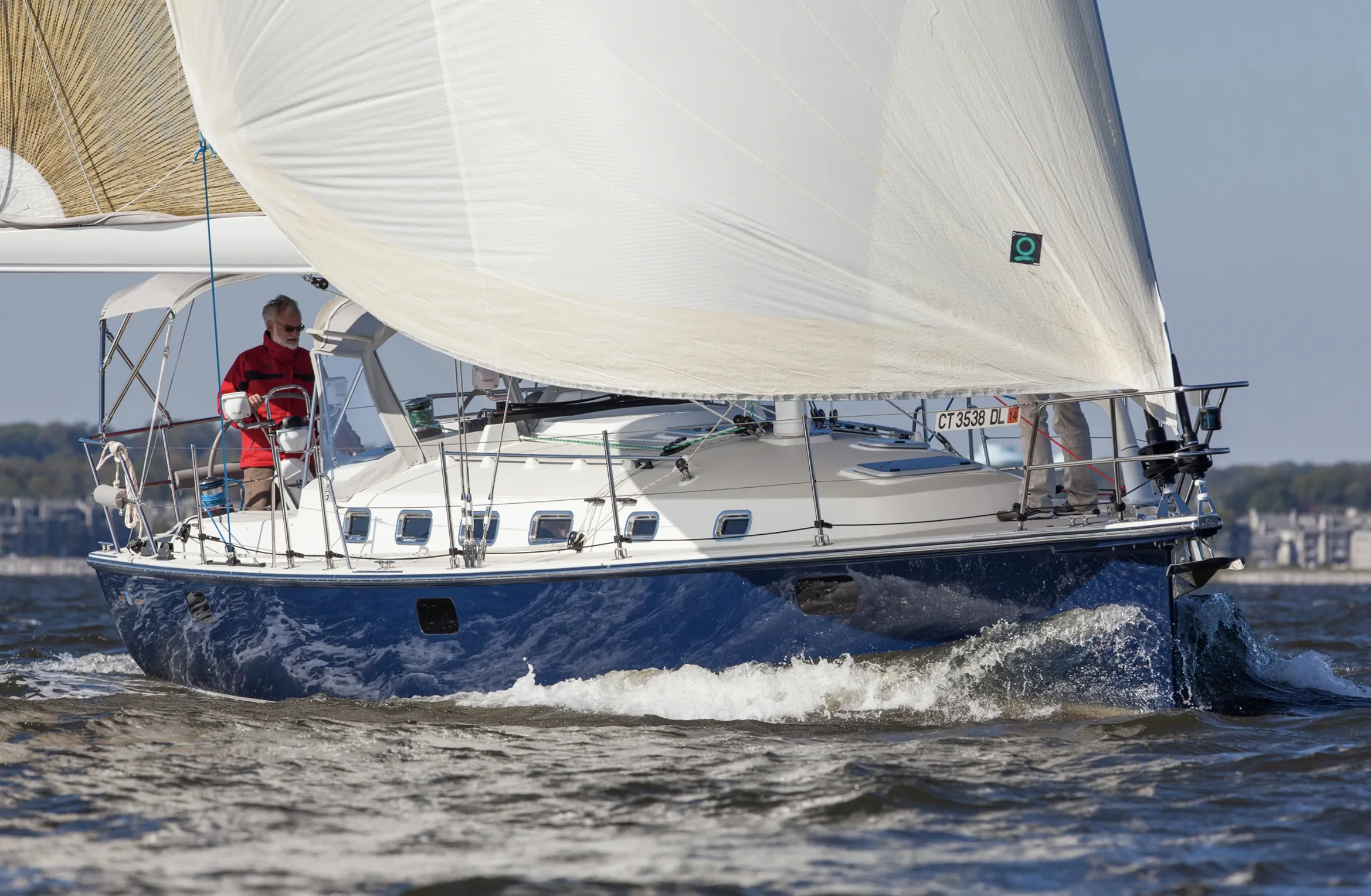
This nearly 9-foot increase in mast height and the shedding of almost 5,000 pounds redefine sailplan options. Some might assume this would set the stage for a carbon mast and boom, plus create an urge to use titanium pins and other weight-saving hardware. But part of the genius of this boat is the design team’s clear grasp of the cruising market. The BJ40 is a cruising boat for those who love to sail and do so without a crew of eight; the rig has been designed and engineered with this in mind.
The mast, rigging, and sailplan reflect a sensible convergence where technology, performance, and cost correlate. Esoteric extremes have been avoided, but design development has not been ignored. The nicely tapered Sparcraft T6061L alloy spar, boom, and spreaders are a proven workhorse combo. The slight performance uptick of upgrading to a carbon rig would significantly bump up the bottom line, and using an alloy spar instead makes it easier to mount tracks or a radar bracket. It also eliminates concerns about what a lightning strike might do to a carbon spar.
The sail area-displacement ratio of 20.6 and double-headsail solent sailplan make this a cruiser-friendly rig and a sailboat fine-tuned for a shorthanded crew. Gone are sluggish traits that would make a light breeze a sign to fire up the diesel. The roller-furled working jib sheets to the end of a self-tacking, carbon-fiber Hoyt boom. Our only concern is that, with no preventer attached, an unintentional jibe could send the deck-sweeping boom across the foredeck with a vengeance, and anyone in its way becomes a target. A preventer for the jib boom would make sense, especially in heavy weather and during off-the-wind reaching and running; another option would be ordering the boat sans the jib boom.
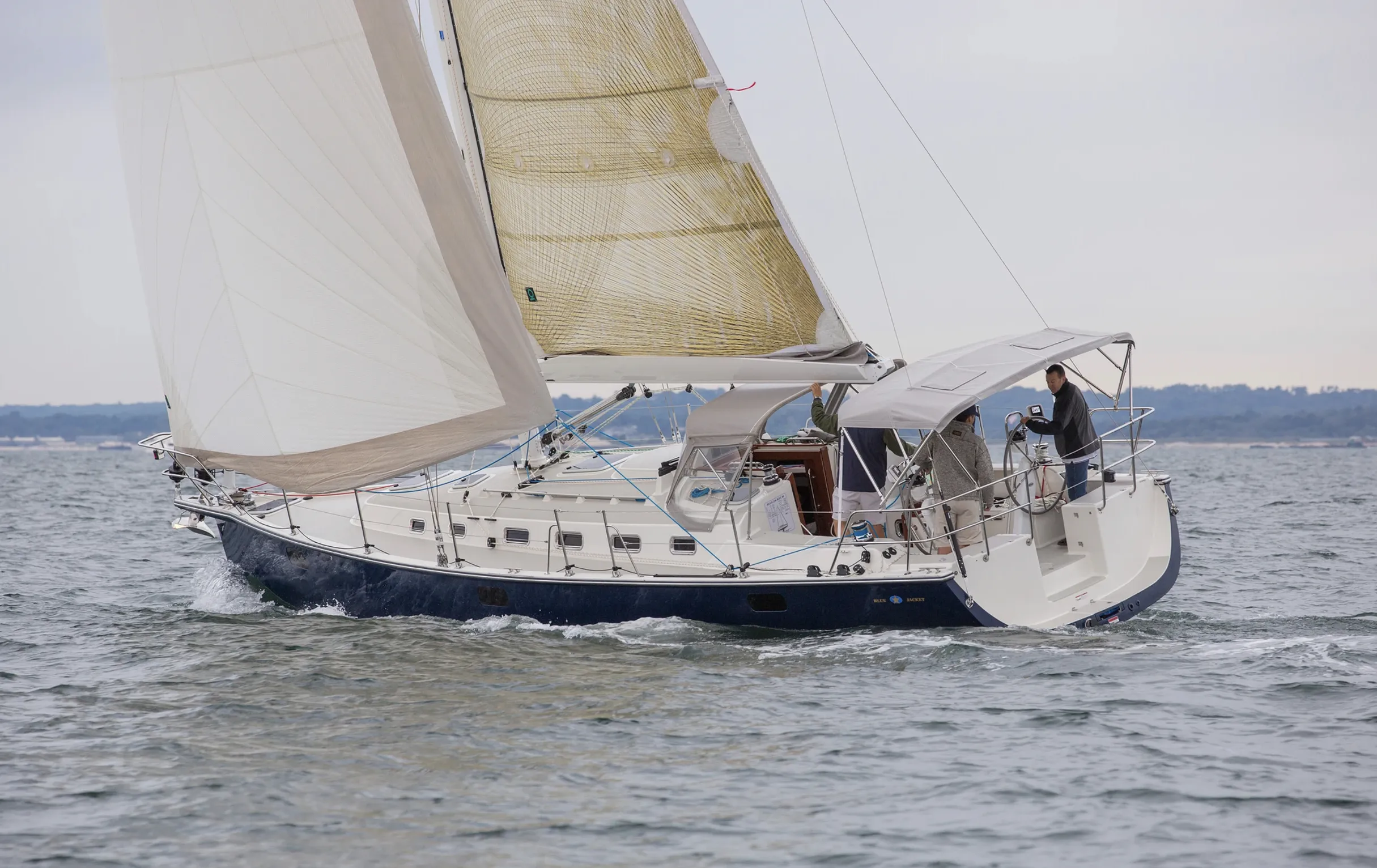
One of the make-or-break factors in any solent/reacher sailplan is the drive that the small-jib/big-mainsail plan delivers. We have tested similarly rigged boats that needed a larger headsail because there was just too much boat to be driven by the big main/small jib combo. The good news here is that the BJ40 is quite capable under this working jib and big main, thanks to the rig-height increase and hull-weight decrease.
We found that it wasn’t until we were into single-digit windspeeds that the big main/working jib proved lacking. At that point, the big reacher rekindled the flame. The really good news, however, is the way in which this sailplan makes it easy to set the right amount of sail to cope with a wide range of conditions.
The stem sports a stainless bowsprit that features several innovations. The weldment provides a tack point for both headsails, a roller and fairlead for the anchor and ground tackle, and a mount for the Hoyt boom. The slot and shape may put some limits on anchor choice, but the setup on the boat we tested worked well. The challenge with a plumb stem is getting the anchor far enough forward to allow retrieval without chipping away at the topsides. A relatively short extension will do the job in flat-sea anchor retrievals, but once the boat begins to pitch in a marginal anchorage, the anchor’s swing arc increases. The IP40’s anchor-handling attributes trump whats available on the Blue Jacket 40, but as adventure sailor Peter Hogg was fond of saying, “Some people prefer to go sailing; others go anchoring.”
ACCOMMODATIONS
Theres a distinct IP appeal that’s apparent to those who step below on the BJ40. The dominant, oversized starboard galley features a smallish centerline sink/sinklet combo, copious solid acrylic countertop space, a first-rate, two-burner Force 10 stove with a guardrail, a microwave, and a stainless drawer-style refer/freezer. There’s a hatch above the galley, and the fiberglass nonskid sole is appreciated when cooking underway, or when crew, clad in rain-soaked foulies, come down the companionway.
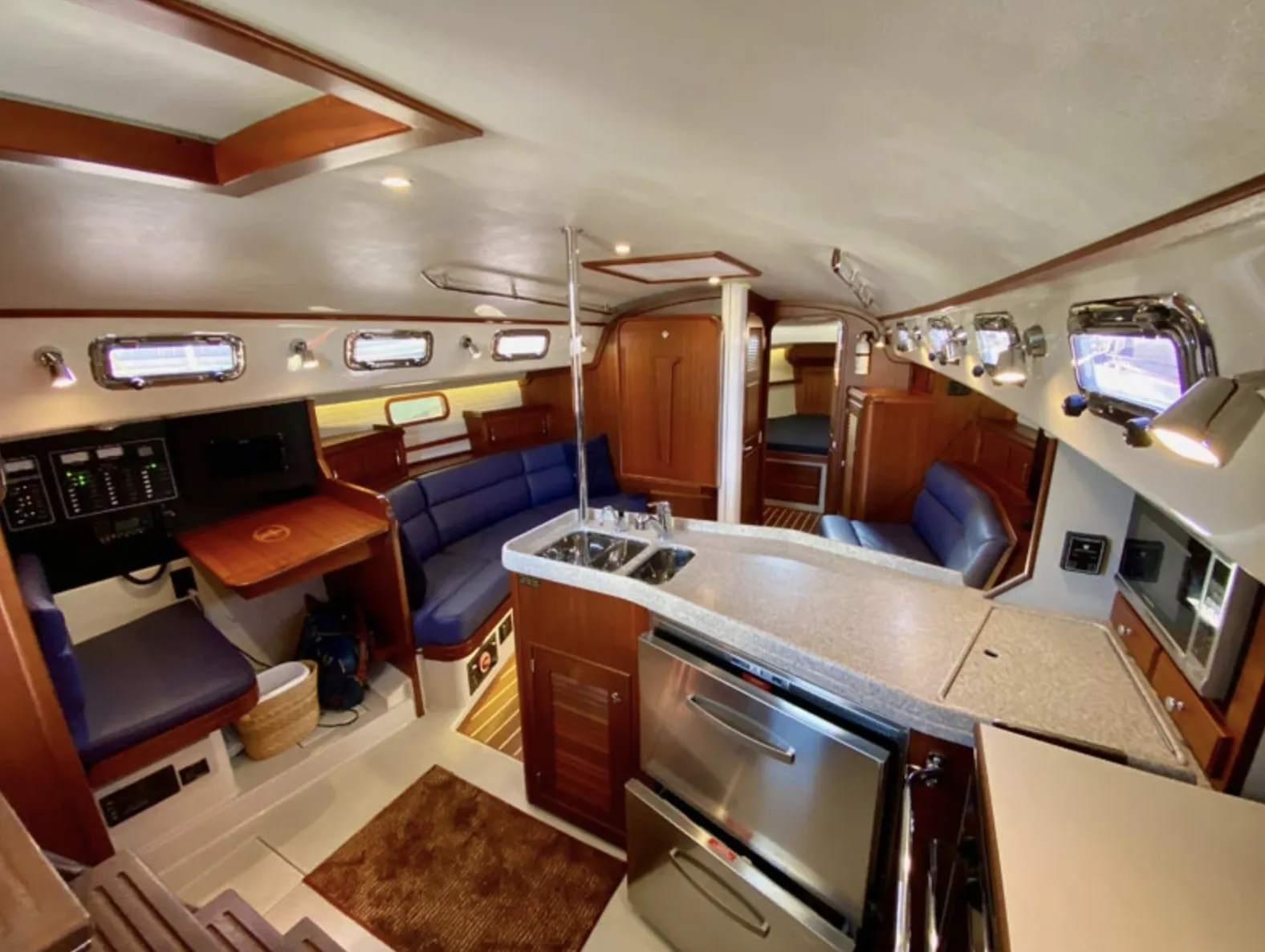
The main saloon has a spacious feel with the table folded up against the bulkhead, and when lowered and unfolded, it affords dining space for those seated to port and starboard. This is more of an in-port or at-anchor amenity, and another example of how the design covers multiple bases. A very useful, strategically positioned nav-station has been tucked in to the port side adjacent to the companionway ladder. Beneath the ladder is the engine access, which is by no means an engine room, but it offers adequate access to key components.
Forward of the galley-saloon living area is a spacious head with shower and a sizable forward, double V-berth cabin. For aft accommodations, there are two options: side-by-side double berths in tight, but functional under-the-cockpit cabins, or a cabin to port and a massive cockpit locker to starboard.

Testers liked the idea of many smaller opening ports in the cabinhouse rather than a commitment to an overly large non-opening window. On the BJ40, hatches are strategically located near key areas below, but without any Dorade vents or other means of letting air in and keeping water out, tropical tradewind passagemaking will keep a crew overly eager to crack the hatch just a bit too soon. This is fine in fair weather, but tough to live with when the spray starts flying. The rigid vang swings back and forth over the main saloon hatch, so the lid cannot be fully extended underway.
Testers noted that both tankage and storage were consistent with the performance-cruiser mission: minimal but adequate.
During tests under power on a flat calm sea with a side-setting current, the BJ40’s 40-horsepower, three-cylinder Yanmar hummed away and the Max prop delivered enough thrust to tally a 7.2 reading on the knot meter, which concurred with the GPS. The semi-balanced rudder did not flutter or vibrate, and the steering control was smooth and positive, remaining responsive even when our velocity through the water was nearly nonexistent. In reverse, all it took was a little sternway for the boat to be easily steered in either direction. Care needs to be taken when backing at anything above a couple of knots, due to the powerful rudders desire to lever itself into a hard-over position.
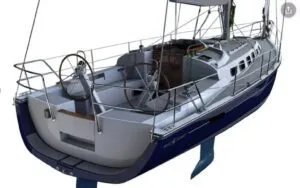
| 2014 Blue Jacket 40 | Larsen Marine Yacht Sales |
|---|---|
| $369,900 | 2246022412 |
| Waukegan IL | |
| 2019 Blue Jacket 40 | Denison Yachts |
| $499,900 | See website |
| Palmetto FL |
The big, full-battened, well-shaped mainsail behaved admirably on the Harken Battcar track, and lazy jacks tamed the main during hoisting, dousing, and reefing. Its a big plus to have the draft and roach available in a conventionally hoisted mainsail. Mid-boom sheeting and a diminutive traveler were tradeoffs to keep the cockpit free of mainsheet tackle. Racers will miss the control that end-boom sheeting delivers, while cruisers will love the dodger/bimini combo and the absence of the mainsheet tackle sweeping across the cockpit.
The big reacher is a powerhouse in light, close-reaching conditions and a major player on deeper reaches. In fact, the need for an asymmetrical is reduced thanks to the masthead hoist and upper girth of the furlable reacher. The one cautionary note is that although the sail seems like a plus-sized No. 1 genoa, it’s not meant to be used on a close reach in double-digit breezes. Sailmakers confirm this based upon an increase in their reacher repair business.
From our point of view, the Blue Jacket 40 hits a sweet spot midway between a race boat and the heavy-displacement cruiser that needs its diesel or 15 knots of true wind to really move. The BJ40’s hull form and foils afford ample upwind performance, and headsail handling is a user-friendly experience. We don’t like the maintenance headaches of saildrives, but the only other negatives we found with the BJ40 were nit-picky ones.
With the hefty base price tag of $390,000, the BJ40 is not a bargain boat, but you do get what you pay for, and in this case, it’s a well-built boat made by a crew that stands behind what they build. The Blue Jacket 40 is an efficient, well-built performance cruiser with comfortable accommodations that brim with sensible usability.

- Blue Jacket Yachts
- Island Packet Yachts
This review appeared March 2, 2020 and has been updated.
RELATED ARTICLES MORE FROM AUTHOR
Leave a reply cancel reply.
Log in to leave a comment
Latest Videos
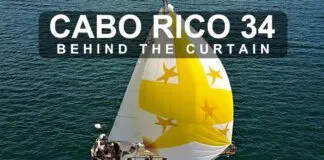
Cabo Rico 34 Boat Review

Super Shallow Draft Sailboat: The Leeboard Sharpie

Hans Christian 41T – Boat Review

Seven dead after superyacht sinks off Sicily. Was the crew at...
Latest sailboat review.

- Privacy Policy
- Do Not Sell My Personal Information
- Online Account Activation
- Privacy Manager

11 Best Single Handed Bluewater Sailboats

Sharing is caring!
We know that you’re serious about sailing when you finally think of venturing to the ocean. Who can resist dreaming of solo sailing through the Atlantic? This is an adventure to prove your advanced skills, strength, and experience.
But before going off on your ocean adventure, you need to plan and prepare . We cannot stress enough the importance of good equipment. There is a lot of sailboat types and models in the market and we want to help you choose the best one for your needs.
Do you know what hull, rigging, and keel types you will need? What’s the best material and model for you to buy?
We will guide you through important sailboat features needed for the cruise. Follow this review until the end and we will share the 11 best single-handed blue water sailboats for your solo ocean sailing!
What Size Sailboat Is Best for Single-Handed Sailing
What type of hull handles rough water the best, sailboat keel types for blue water sailing, keel or decked stepped mast, sloop or ketch, how many spreaders, cutter rig, self steering gear, furling sails, westsail 32, albin vega 27, pacific seacraft 34, canadian sailcraft 36 traditional, hallberg rassy 352, contessa 32, fast passage 39.
If you are planning to manage your boat single-handedly, then size is an important factor to consider. It can affect the size of your accommodation, and maybe the boat’s design for speed and power.
Being alone, you need to have a clear overview of what is happening on your boat. This is especially important when maneuvering or for docking operations.
Experienced sailors can handle a 60-foot sailboat but novices would find it difficult with its steep learning curve . Check out the Vendee Globe if you don’t believe me. In general, a good sailboat size for single-handed sailing would range from 25 to 40 feet.
We recommend sailboats with sizes under 40 feet. These have good displacement and are great when against bad weather. They are solo-friendly and simply the most manageable.
But in the end, choosing a suitable size depends on your experience and preference. You need to consider your overall health, age, and physique. Make sure to have a complete understanding of your sailboat before going on your journey to prevent accidents.
The hull or the main body of your boat comes in varying shapes and sizes. Each different type of hull is designed for specific purposes.
When venturing the blue waters, you need to have a hull design that could handle rough waters easily. The hull shape determines the performance of your sailboat and therefore, should align with your strengths and skills.
Today, the most popular design would be the heavy displacement hull . This design is intended for ocean cruising and longer sailing travels.
It has great stability and performs better the deeper the draft is. With this design, you would expect a slow and steady motion during your sea travels with minimal effort.
V-type hulls, on the other hand, are designed to plane or ride on top of the water. You can usually see these types of hulls on powerboats. The V-type hull usually has a bigger engine and best when dealing with choppy waters while moving at high speed.
Narrow beams are also a great option for those who are looking for another ocean friendly feature . These are usually seen in traditional sailboats.
Canoe stern or the double are considered to be the best sterns for offshore sailing. They help cut through a following sea and really helps prevent the waves from pushing the stern over too much. It also has great buoyancy and balance that is perfect for bluewater cruising.
The best materials for hulls would be fiberglass, metal, and aluminum. These are durable and could last for decades if properly maintained.
Aluminum is lightweight and has resistance to corrosion and impervious to magnetism. Boats built with aluminum are fast, stable, and seaworthy.
Fiberglass hulls need less attention. Currently, boats are usually made of fiberglass as the material is easier for companies and also great for seakeeping and stability.
Metal like steel has high abrasion resistance. It helps retain the boat’s appearance but can be prone to rust and corrosion.

A keel is a fin-like blade found at the bottom of a sailboat. It supports the ballast and helps to control and steer the boat.
It is generally designed to stop the boat from getting blown sideways because of wind pressure. The full keel, modified full keel, fin skeg, and fin spade rudder are all suited for bluewater sailing.
A full keel runs along the full length of the boat – from the bow to the stern – which makes it the most stable in the water. It carries the vessel well and is the safest to use when grounding as it reduces the chances of damage.
This is most ideal when cruising and the most comfortable out of the four keel types with its minimal heel. Although the slowest on the list, it has great directional stability and steering capability.
An improved version is the modified full keel . It is a hybrid with improved windward performance and better heel reduction than the full keel. However, it made small concessions on its stability and comfort.
Meanwhile, the fin keel with skeg rudder has more strength and protection against damage and impact. It also has better mobility and steering capability.
This type has a faster speed and windward performance compared to the modified and full keel types. It is also more balanced, which is ideal for cruiser-racer types of sailboats.
Lastly, we have the fin with a spade rudder. This is the fastest type on the list but also the most vulnerable as the spade rudder greatly relies on the rudder stock. But if you want speed and great windward performance, then this type is the right one for you.
Sailboat Rigging Types
Rigging is the whole system of ropes, chains, and cables. It supports the sailboat mast and controls the sails’ orientation and degree of reefing.
There are two main groups of sailboat rigs, Deck Stepped and Keel Stepped. The main difference lies in the location of its mast step. Both are fine choices and the better rig would depend on your preference.
Just as its names suggests, you can find the mast stand on top of the deck with Deck Stepped and on the hull’s bottom with Keel stepped. This means that to reach the keel, the mast would need to pierce through the cabin.
Deck Stepped rigs have masts that are more flexible because of their contact points, and are easily adjustable for optimal performance. Keel Stepped rig is rigid and strong and offers slow and steady cruising.
Now let’s move on and talk about Slope rigged and Ketch rigged. Which is better?
A sloop rig is simple. It is composed of a mast with a jib and a mainsail. Ketch, on the other hand, is more complex with its two masts with any foresail, main and mizzen mast combinations.
If you are choosing between Sloop and Ketch rigged sailboats for solo sailing, then we recommend Sloop. Although, Ketch is manageable and can be easily used with less strength and effort. This is perfect for cruising as it can work around multiple sailing conditions.

In terms of spreaders, you can freely choose between a single or dual spreader. This deflects shrouds and supports the mast. We do recommend dual spreaders but single spreaders are also good.
It’s just that double spreaders give the rig more strength and better sail control.
The cutter rig is sometime referred to as an inner forestay or baby stay. Simplest way of describing it is that you have two head sails instead of just one. Gives you more options on sail configurations.
Single Person Sailboat Equipment and Gear
Your sailboat would not be complete without gear and equipment. You might want to invest in autopilot or wind vane, furling headsails, electric windlass, life jackets, and AIS to make your voyage much easier.
Wind Vane is an autopilot steering that you can use without electricity. It is usually placed on the back to catch the wind and respond to various wind conditions.
It automatically adjusts the rudders in response to the wind to alter the boat’s course. This is helpful because it’s like having another crew member on board you don’t have to listen to and feed.
Headsail furling or roller reefing is necessary for easier management of your headsails. It is important to have a functioning and updated roller furling system in order to reef, dowse, or stow the headsail efficiently.
Another item we would recommend is an electric windlass . You can choose one that works vertically or horizontally, depending on your needs. This will help you move the anchor effortlessly with a single button. Using the two windlasses that god gave you makes anchoring more difficult then it needs to be.
Life jackets are a must in every sailboat. Just be sure it fits you and that you know how to use it. Also, be sure to buy a coast guard approved product with a harness that could support your weight.
The Automatic Identification System (AIS) will help you avoid collisions . It is recommended to get a receiving and transmitting one when going solo sailing.
This way, you and the other boats with AIS within the radar area are alerted to each other’s speed, course, and direction.
Really, you won’t know what you might encounter in the ocean so you must always be prepared. We hope that these items will help you achieve a safer and more secure sailing experience.
11 Best Sailboats for Solo Sailing
Now, here are 11 sailboats that are best for solo sailing. Any of these vessels are guaranteed to take you safely and comfortably anywhere around the world.

This is a long full keel fiberglass sailboat that was built from 1971 to 1981. Its design was based on a previous model, Kendall 32, and has an amazing interior size geared for comfortable cruising.
W32 is widely noted for its seaworthiness. It is built with a strong and durable design and materials to resist extreme sea conditions.
It was used on various voyages and circumnavigations. Its hull is a heavy displacement and double-ender type designed for long periods of sailing.
It is also a cutter-rigged sailboat equipped with a single mast, forestaysail, mainsail, and jib. Its overall length including the bowsprit and boomkin is roughly 40 feet, which is perfect for sailing single-handedly.
Most people would note that the speed and acceleration of W32 are quite slow. This is due to its larger wetted area and sometimes newbies’ mistake of carrying too much on board.
With the right keel, sails, and rig configurations you can improve on W32’s speed and weaknesses. As seen from David King’s documented modifications, W32 proved to be safe, steady, and fast when sailing on blue waters.

Vega 27 is a modified full keel sailboat with a masthead sloop rig. It was designed around 1966 and became the most popular production sailboat in Scandinavia.
It has a unique look because of its reverse sheer commonly seen in smaller boats to increase the area of its interior. It is made with fiberglass, but has a narrower hull compared to similar sized boats in its class.
Its shallow hull has a large cutaway as seen with modified full keel designs. This can make her quite stiff, heeling to about 15 degrees when its shoulders are buried.
Still, it is great for single-handed sailing because of its manageability and balance under different conditions. You cannot help but admire its light helm and great tracking capability.
Vega’s light air performance is okay but it shines when the wind blows at 15 knots or more. It could even maintain its dryness even with rough waves and weather conditions.
The most comforting feature would be its control and stability at all times unlike other more modern vessels with spade rudders. Overall, it is safe and ideal for longer cruises offshore.

This 30-foot traditional sailboat could take you anywhere. Alberg is notable for its narrow beams, long overhangs, and full cutaway keel with its directly attached rudder.
It is strong and durable. Its materials were mostly aluminum, hand-laid fiberglass, and polyester resin. More ballasts were produced in later productions as the early ballast was built with iron as opposed to the original lead design.
Alberg is greatly influenced by folk boats in Scandinavia. It is built with fiberglass and has an interior with comfortable full standing headroom and a well-vented galley.
This classic design from 1962 is ideal to cross oceans and is used for various circumnavigations. Alberg is a stable and seaworthy boat that could even be used in casual racing. Its best point of sail seems to be a beam reach and close reach.
It is praiseworthy when crossing oceans. Unlike modern designs that tend to be thrown around on rough seas, Alberg’s narrow beam design slices through big and rough waves and moves quickly. Under extreme weather conditions, it could perform heaving-to and lying-a-hull with no problems.
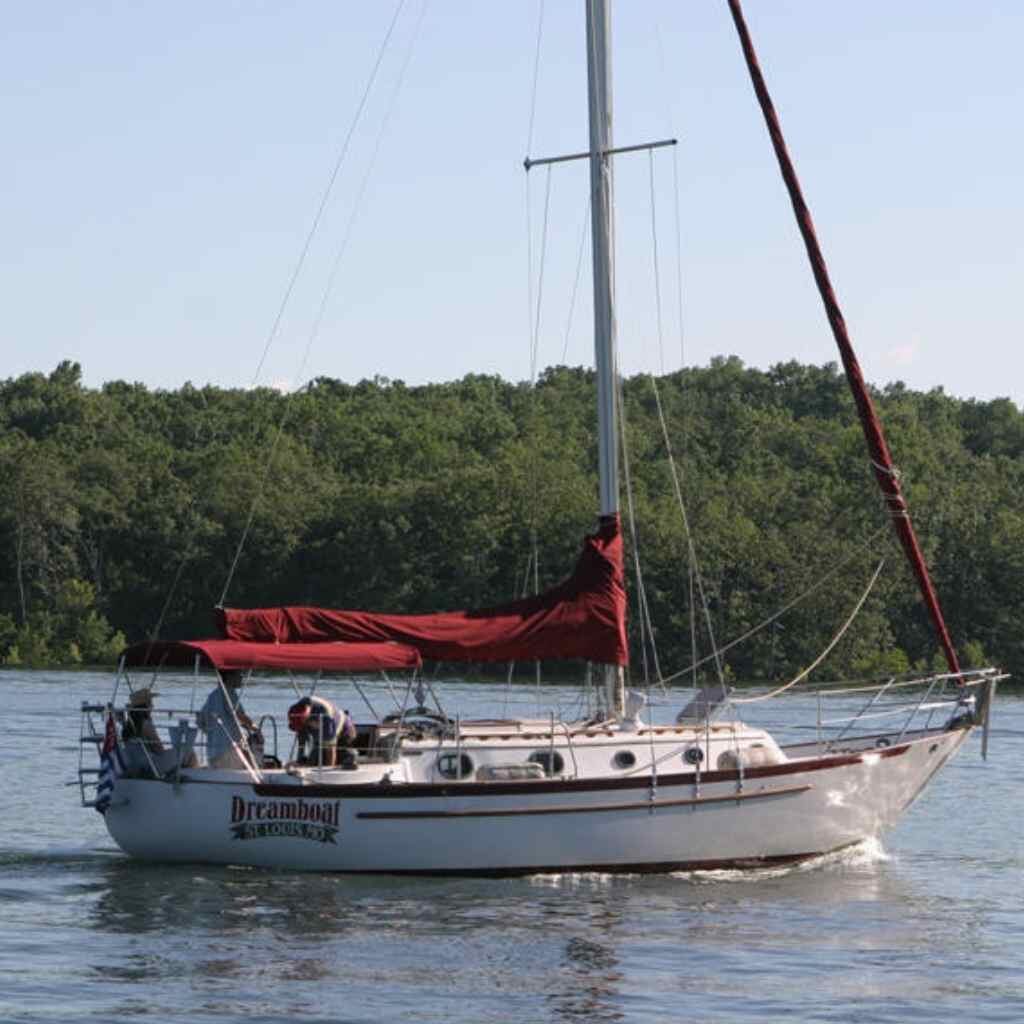
Pacific Seacraft 34 is a smaller heavy displacement semi-long keel sailboat based on the highly successful Crealock 37. It has the same graceful lines and appearance as the Crealock and is known as the Voyagemaker.
It is built with comfort and safety in mind with its large overhanging bow and beautiful sheer line ending with a traditional canoe stern. Constructed with the highest standard, it is a seaworthy sailboat that is ideal for bluewater voyages.
It is a cutter-rigged sailboat with skeg-hung rudders and control lines being fed back to its cockpit. The smaller cockpit may feel cramped but its design lowers the risk of flooding.
Still, it has a great interior suited for living aboard. It has a large headroom, comfortable galley, and up to five berths for comfortable cruising.
Although you may feel some hobby-horsing windward because of the overhangs, Seacraft 34 is overall a very balanced boat with great upwind performance. It has outstanding control capabilities and is able to sustain surfing speed with ease.

This is a double-ended full keel cruiser designed by Bob Perry and built-in Taiwan in response to the rising popularity of Westsail 32. It was offered to the market as a semi-custom boat and built with high-quality materials.
You can modify the internal layout and can choose a ketch, cutter, or pilothouse version. There is an option to use wood or aluminum spars. The mast could also be keel-stepped or deck-stepped.
Before, only 20 were ketch sailboats due to the popularity of the cutter design at that time. Now, ketch has proven to be faster and more balanced between the two.
Tayana is relatively faster than any sailboat in its class. Its best point of sail is in its broad reach. It also tracks well windward, and is an ideal choice for the trades. It is also great how the cockpit is secured from any flooding even when traveling.
Today, a lot of people are still actively sailing this. Tayana 37 has become well known for offshore and blue water sailing.

Canadian Seacraft is well known for its fiberglass racer and cruiser. CS 36 is a small traditional fin keel sailboat with a masthead sloop intended for recreational use. It is seaworthy and has good performance in different weather conditions.
It was designed by Raymond Wall and had a production run between 1978 to 1987. It remains to be popular in both north and south borders.
It is a beautiful sailboat with a graceful sheer line and balanced overhangs at both bow and stern. Its details and quality in design and production are clearly of a higher tier.
It is mostly built with fiberglass and balsa wood. It is equipped with an internally mounted spade transom hung rudder. All of its lines lead to the cockpit, which is ideal for single-handed sailing.
CS 36 Traditional also has a deep-depth draft and wide beams with great access to the cockpit and foredecks. It is wide and spacious, which is perfect for comfortable cruising.
The sailboat has great proportion and traditional aesthetics. It is simple and straightforward, which makes it ideal for bluewater sailing.

This is a sturdy and high-quality sailboat built between 1978 to 1991. It features a progressive design, combining a walk through with the aft-cabin from the main saloon. It is made with a tall and standard rig each supported on double and single spreaders, respectively.
Hallberg Rassy 352 has a nicely balanced hull sporting a fin keel with rudder on skeg, a generous beam, and a 45 percent high ballast ratio. Its water and fuel tanks are placed low in the keel to improve sail carrying ability.
Its production spanning 14 years allowed for continuous improvements in its specifications. Newer sailboats have raised hulls for bigger headroom in the under the deck, aft cabins, and the walkthrough. Engines were also replaced by a Volvo and later a Penta Turbo or the bigger MD 22.
It is impressive how they balanced good interior and sailing performance. It has great seakeeping ability and smooth motion in heavy seas, easily an ideal sailboat for singlehanded sailing.

Corbin 39 was designed based on a Dufour design named Harmonie, increasing freeboard, and flushing the deck. Its style is influenced by the classic Scandinavian cruiser, Westsail 32.
It has a long fin keel, blunt bow, and a high freeboard. It was sold as kits, and various deck molds were produced. They have pilot, aft, and center cockpit variations.
It was made of sturdy and high-quality materials. The earlier version’s decks were of marine grade mahogany but it was later changed with Airex foam. Its lead ballast was encapsulated with fiberglass for added protection.
Earlier boats had a single spreader main or a turbocharged double spreader. Later, Corbin used 49 feet double spreader rigs instead, and all were deck-stepped.
Corbin 39 is truly a strong and seaworthy vessel. With its fin keel and skeg rudder, cutter rig, and reefed main combinations, it could take anyone safely and comfortably anywhere in the world.

Valiant 40 took its looks from Scandinavian double-ender sailboats. It had a successful production run that spanned for 47 years. It proved to be one of the pioneers for modern blue water designs.
Its hull is made from thick hand-laid fiberglass, bolted and covered with teak. Its ballast is cast with lead bolted to the keel stub. Lastly, the skeg is constructed separately from hull molding and encased with fiberglass before being fastened to the hull.
It has a beautiful bow and sheer lines and a longer LWL for maximum speed. At the back are a non-spacious cockpit and a canoe stern ideal for bluewater sailing operations.
Under the waterline is a fin keel with its skeg hung rudder. It perfectly matches with the cruising hall above, minimizing wetted surface area
Overall, Valiant 40 is a seaworthy vessel with great blue water performance. Extremely balanced and well-mannered, it can withstand extreme weather conditions with ease and minimal effort on your part.
It soon gained a reputation as a fast water passage-maker with high integrity. Now, it is regularly used for circumnavigations by solo sailors and voyagers.

If you like a sailboat with a proven track record, then Contessa 32 is for you. It is a seaworthy racer-cruiser with good all-around sailing capabilities released in 1971.
Like its younger sister, Contessa 26, it has great speed, integrity, and affordability . Contessa 32 is a definite combination of old and new with its traditional narrow beam, a full hull with a fin keel, and fiberglass rudder protected by a skeg found in more modern yachts.
It has marked overhangs and a narrow tuck-up stern. It has less headroom below in return for its lesser wind resistance.
This configuration delivers fast racing speed and great stability. It could definitely withstand extreme weather and rough waves. Contessa 32 is claimed to be able to right itself when rolled or capsized.
Contessa 32 is known for its forgiving nature. It has a responsive helm and excellent windward performance. With its astounding stability, it can carry full sail for up to 25 knots.

Fast Passage 39 was designed by William Garden and is said to be a legendary cruiser with speed, ruggedness, and fame. It is a stout double-ender comparable to the Valiant 40.
It has the same LOA and LWL as Valiant and also has nearly identical ballast and displacement. The difference is its narrower frame and more evolved underwater shapes resulting in flatter forward and aft keel sections and less wetted area. It also has great directional stability as its rudder allows great control under wind vane and down steep waves.
It is a high performing sailboat but also difficult to find as only 41 were produced. A part of the group was offered as hull and deck kits intended to be finished by the sailboat owners.
Fast Passage 39 also has a proven track record and has won single-handed blue water races. It performs great under a wide range of conditions, especially in light winds.
By now you should have some idea what makes a vessel Bluewater friendly. There are hundreds of vessels that can make long distance voyage safe and enjoyable. These examples above are just a few examples of the Best Single Handed BlueWater Sailboats.
Leave a Comment Cancel Reply
Your email address will not be published. Required fields are marked *
Save my name, email, and website in this browser for the next time I comment.
Get your "Sailing and Boating" Free Guide
- Skip to primary navigation
- Skip to main content
- Skip to primary sidebar
- Skip to footer
Yacht Cruising Lifestyle
Everything fun you can do from your yacht
20 Bluewater Cruising Sailboats Under $100,000
January 5, 2021 by Travis Turgeon 2 Comments
Choosing the right bluewater yacht for your needs requires a ton of research. With so many designs and features available, it can be overwhelming trying to narrow down your options. The process gets even more complicated when you begin to consider the personal opinions of other sailors.
So how do you know where to start? Every person’s definition of comfortability will vary when it comes to onboard living. What suits a family of four won’t necessarily suit a couple or a single-handed sailor. Your budget, style, and needs are all unique to you and your situation, so it’s essential to know just what to look for when buying a new or used vessel .
To start you off in the right direction, we put together a list of our top choices for bluewater cruising yachts under $100,000.
Allied Princess 36
Built as a long-keel ketch or cutter, the Allied Princess 36 was in production from 1972 to 1982. Around 140 vessels were manufactured in total, so you can occasionally find them on the used market.
While these cruisers’ design and construction are considered sufficient, the excessive use of fiberglass makes the design a bit bland. Although they may not have the most appealing design, these bluewater yachts certainly tick a lot of boxes.
With the full-keel measuring just four-foot six inches, it’s a design that holds steady on its course without pointing as high as a fin-keel design.
Overall, the Allied Princess 36 is a wonderful option for bluewater sailing.
Prices range between $30,000 and $60,000.
Cabo Rico 38
The Cabo Rico 38 is at the top of its class, constructed with a long-keel cutter rig design that gives it outstanding bluewater capabilities for its price point. The vessel was produced in two models – Pilothouse, and Trunk Cabin – although the Pilothouse design is less common.
Cabo Rico i s consistently successful with it s 38 models, and t hey remain one of the most prominent cruising boats on the water.
Internally, this boat has various features required for a bluewater cruiser: Large water and fuel tanks, a solid design with balsa wood cores for thermal and noise insulation, and an overall seaworthy design.
While this boat wasn’t m eant to win races, it is a fantastic choice for a crui sing vessel.
Prices range between $30,000 and $80,000.
Celestial 48
The Celestial 48 is the largest boat on our list and is commonly sought after by the cruising fraternity. The problem is, these vessels are scarce on the used market.
The Celestial 48 is a ketch rig with a shoal-draft, fin-keel design, and a center-cockpit configuration that is comfortable and ideal for bluewater sailing. One of our favorite features is the six-foot, two-inch headroom in the cabin, along with high-capacity water and fuel tanks.
The Celestial 48 was built in China by the Xiamen boatyard, although it’s no longer in production.
If you can find one, the Celestial 48 will make an excellent bluewater cruiser.
Prices start near our $100,000 mark.
The Corbin 39 is manufactured in two designs, aft or center cockpit. Designed and built in Canada by Robert Dufour and Marius Corbin, the 39 is now (sadly) out of production. This cruiser remains a favorite of many and is still commonly searched for on the used market.
One thing to note is that most of the boats were sold as unfinished kits, leaving owners to complete the interiors themselves. For this reason, the standard of interior design finish will vary, so it’s worth checking and comparing with other vessels carefully.
When found, the Corbin 39’s present a very reasonable price tag, but a full survey is essential.
Prices range between $40,000 and $60,000.
The Freedom 36 is one of the smaller yachts on our list, but it has an exciting design that attracts cruisers. The wide beam and long waterline design allow for a much larger interior than most other boats of similar length. As a cruiser, space is a top priority, so this cruiser should be on your list of considerations.
A unique feature of this Freedom yacht is the stayless carbon fiber mast. It looks a little odd for most, with no forestay or backstay and a mast that flexes alarmingly in the wind. It’s a proven design, though, and gives clean lines just like an aircraft wing.
The Freedom 36 is certainly an exciting cruiser to keep an eye on.
Prices range between $40,000 and $80,000.
Gulfstar 44
Known as a capable cruiser or live-aboard boat, the Gulfstar 44 is a spacious yacht that can take you around the world.
Designed with a fin-keel and skeg-rudder, the Gulfstar is comfortable and well built.
Internally, you’ll find a large galley, king-size aft cabin, and spacious fore cabin, with ample room in the saloon. Earlier Gulfstar vessels suffered from inconsistent build quality, but from around 1976 onwards, the company made huge improvements.
For a spacious bluewater sailboat with excellent heavy-weather handling characteristics, the Gulfstar 44 is a great choice.
Prices start around $60,000.
Hans Christian 38
If you’re considering cruising the world in a bluewater yacht, then the Hans Christian 38-T should be added to your shortlist of candidates.
With a full-length keel design and laden with solid teak, this boat weighs in at 12.5 tons, making it a heavy displacement vessel that you can rely on to take you through some of the harshest conditions.
Manufactured in Taiwan, these cruisers can be a chore to acquire. One of the most common downfalls of the Hans 38-T is electrical problems, so be sure to get the wiring checked out by a professional.
Outside of electrical issues, this boat is a proven winner in the cruising world.
Prices start around $70,000 but expect to pay well over $100,000 for the more admirable models.
Hinckley Bermuda 40
The Hinckley Bermuda 40 was in production for over 30 years, from 1959 until 1991, but only 203 boats were manufactured in total. Many Bermuda 40s were used as racing vessels throughout their production, winning the Northern Ocean Racing Trophy in 1964.
The design also gained many admirers in the cruising world thanks to the long keel and centerboard, which allows the boat to maneuver through shallow waters. The Hinckley Bermuda 40 is hard to beat for versatility, combining classic looks with the shallow draught and generous interior space.
Early models from the 60s and 70s start around $80,000, but later models land well above our $100,000 threshold.
Island Packet 35
Although only in production for six years, 178 Island Packet 35s made their way onto the market. These vessels have become justifiably popular with coastal cruisers and bluewater sailors alike.
These cruisers are available in two designs; long-keel or long-keel with centerboard – both of which come with cutter rigging.
The design is conservative and built for comfort rather than speed. Inside space is very generous, with a 12-foot beam, a v-berth cabin in the forepeak, and a double cabin on the aft port side.
Island Packet 35’s appear on the used market regularly, so locating one shouldn’t be too much of a hassle.
Prices start at around $65,000.
The Niagara 35 is a popular cruiser available in two exciting models, each one coming with a fantastic interior design.
The original model features a center galley and marine toilet that separates the fore and aft areas. The saloon is completely closed off, making it useful during extended passage journeys.
The later model has a double-berth forward, separated from the saloon by the head and shower. Both models include a spacious cockpit design. Through its 12 years of production, 260 Niagara 35’s went on the market – so you can regularly find them for sale.
Early models start around $30,000, with later models coming in closer to $70,000.
Only 32 of the Robert Perry-designed Nordic 40s went through production, making them exclusive and difficult to find. If you do manage to get your hands on one, however, you won’t be disappointed.
The fin-keel and skeg-mounted rudder design allow for up to six people to stay comfortably, including extra storage space for luggage and provisions.
The Perry design is recognized for the quality of its fittings, including rod-rigging and full hull insulation on early models. After 1987, they cut back on a few design features, but it’s still a quality boat.
If you can manage to find a Nordic 40, it will make an excellent investment.
While it may be rare to find one below our $100,000 mark, it is possible.
Passport 40
Built in Taiwan, the Passport 40 is another excellent design by Robert Perry. Sporting a fin-keel and a skeg-mounted rudder, the design is known for its well-balanced performance.
Originally supplied with a sloop-rig, the majority have an inner stay, fitted to allow a double headsail. This cutter-style rig makes the Passport 40 even more suitable for ocean crossings.
The interiors are well designed – as you’d expect from a Robert Perry – and make for comfortable living during long passages.
Peterson 44
The Peterson 44 was designed and built as a performance cruiser, combining sufficient speed and sea-kindly handling.
A low center-cockpit, 10,000 pounds of lead ballast, and a long fin keel allow this vessel to take turbulent conditions in stride without sacrificing the crew’s comfort.
Internally, there is plenty of space in the well-designed cabin. For long passages, there’s a 132-gallon water tank and a 117-gallon fuel tank.
Finding a Peterson 44 may be your only problem. They manufactured about 200 boats, but owners rarely like to part with them – adding to their intrigue and value.
Prices for these yachts vary widely. Expect to pick up an older model between $50,000 and $75,000.
Prout Snowgoose 37
As the only catamaran on our list, the Prout Snowgoose 37 is a proven boat for circumnavigation on the bluewater trail.
A standout feature of the early Snowgoose models is its narrow beam, which allows them to navigate canals easily. These boats are popular in Europe and are common on the journey between Spain and France on the Mediterranian. Additionally, the Prout Snowgoose 37 can fit into a single-hull marina, reducing berthing costs when compared to most other catamarans.
If you have never considered a catamaran in the past, the Prout Snowgoose 37 may change your mind.
Prices start near $45,000, with later models reaching over $100,000.
The Shannon 38 comes in two styles, with either an aft cockpit or pilothouse. Shannon Yachts are known for their build quality and attention to detail, and the 38 is no exception. The boat is available as either a ketch or cutter rig, but it’s renowned for its performance at sea in both forms.
Only 100 were built, with the final boat launched in 1988. If you can find one on the used market, it will make a competent bluewater cruiser.
Prices start at $40,000 for older models, with newer models inching closer to our $100,000 mark.
Only 80 of the Tartan 41s were manufactured, although they produced a similar Tartan 43 with the same molds. It is a fin keel design, with a skeg-mounted rudder and sloop-rigging. In its day, it was considered a fast cruiser, but now they’re mostly made for comfort.
If you’re looking at a Tartan 41, check out the keel dimensions. The keel was undersized on earlier models, which caused heavy-weather steering issues. The boatyard redesigned the later models, and some retrofitting has been done on the originals.
Prices start around $45,000 and reach upwards of $70,000.
No list of bluewater sailboats would be complete without the Tayana 37. It’s a beautiful boat designed by Robert Perry that comes in three variants; cutter, ketch, and pilothouse.
Built to compete against the popular Westsail 32, the 37 became a good seller – with almost 600 launched to date. Today, they are manufactured in limited numbers, as the traditional teak-heavy design is now less popular.
If you can find a good Tayana 37, cruising the oceans will be a pleasure in this sturdy and robust vessel.
Early models cost around $45,000, with newer or retrofitted models topping $75,000.
Another boat designed by Robert Perry, the Valiant 40 is one of the most sought-after bluewater cruisers on the used market. By the end of production, two manufacturers were able to put out around 200 boats, so it’s certainly possible to get your hands on one.
With a fin keel, reasonably heavy displacement, and solid build, open ocean cruising is made comfortable in the Valiant 40.
The Valiant’s trademark is the canoe stern, something Perry has carried over into many of his designs. The boat’s performance sets it apart from the more traditional heavy-cruisers, and it still has many admirers.
Expect to pay upwards of $45,000 for an early Valiant, but well-maintained vessels will command much higher prices.
Wauquiez Pretorien 35
When the weather gets rough, most people prefer bigger, heavier cruisers. Small boats generally don’t perform as well in harsh conditions, but the Pretorien 35 is an exception.
Built to IOR specifications, it’s a short, wide-beam design, with a ballast in the keel that makes up half of the displacement. It may be disappointing in light winds, but as the breeze picks up, the Pretorien comes alive.
Wauquiez built boats are known for their quality finish, so you shouldn’t hold any doubts when buying a used Pretorien.
Prices start around $39,000.
Westsail 32
At just 32 feet, the Westsail might be a surprising inclusion on our list. However, the design has proven itself many times over and remains popular with many cruisers.
With a long keel, transom-mounted rudder, and heavy displacement, these are seaworthy yachts.
The flipside to this is that the performance can be underwhelming. The Westsails are known for being slow, safe boats that will get you wherever you need to go – making them perfect for leisurely cruising.
Over 800 vessels entered the market between 1971 and 1981, so there should be plenty available if you look hard enough. The other point to remember is that they sold them as owner-completion kits, so the internal fitments, in particular, will vary in quality.
With so many available, the prices remain reasonable – with an early Westsail 32 fetching around $29,000 and well-maintained older models coming in closer to $50,000.
Remember: When buying a bluewater cruising yacht for less than $100,000, compromise is inevitable.
If you’re looking for a seaworthy, heavy-displacement design, you’ll have to compromise on the boat’s age. Choosing a modern, light design will allow you more for your money.
The best advice for buying a boat is to be truly honest with yourself by defining your needs and separating them from your desires.
Want to join the community at #BoatLife? Get a conversation started on our new forum by leaving a question or comment!
If you found this article helpful, please leave a comment below, share it on social media, and subscribe to our email list.
For direct questions and comments, shoot me an email at [email protected]
Sharing is caring!

Reader Interactions
November 15, 2021 at 6:30 pm
You guys didn’t mention Cape dory or pacific seacraft. How long have you been sailing?
February 18, 2022 at 1:37 pm
Very nicely done. There will always be people who disagree with your list but they reserve the right to comment without creating any value which is what you provided. Thanks for putting this together.
Leave a Reply Cancel reply
Your email address will not be published. Required fields are marked *
Save my name, email, and website in this browser for the next time I comment.
MB #20512 PO BOX 480 Sevenoaks Kent TN13 9JY
Tel: +44 56 0386 9163
Keep In Touch
Thank you for reading.
Join our online crew and find more about the #boatlife
17 Legendary Bluewater Sailboats Under 50 Feet (with Photos)
Bluewater sailboats have long been admired for their ability to handle the toughest conditions and take you on adventures across vast oceans. In our list, we'll introduce you to 17 legendary bluewater sailboats under 50 feet, from classic designs that have stood the test of time to modern innovations that have captured the hearts of sailors. These boats are known for their exceptional seaworthiness, comfort, and performance.
The legendary bluewater sailboats under 50 feet include Rustler 36, Tartan 37, Hallberg-Rassy 42F, Baba 30, Island Packet 38, Pacific Seacraft 37, Valiant 40, Najad 370, Moody 42, Halberg-Rassy 39, Sweden Yachts 45, Boreal 47, Amel Super Maramu, Outbound 44, Hylas 49, Malo 46, and Garcia Exploration 45.
These legendary sailboats have earned their reputation through excellent performance, durability, and comfort on long offshore journeys. When you choose the best bluewater sailboat to explore the open ocean, consider your personal sailing preferences. If you're looking for a budget-friendly boat, Baba 30 costs only $150,000.
- You can purchase these famous bluewater sailboats for $150,000 to $1.5 million.
- The length overall (LOA) of these boats ranges from 30 feet to 49 feet.
- When you choose a sailboat, consider its size, design, amenities and features, your budget, and your sailing purpose.
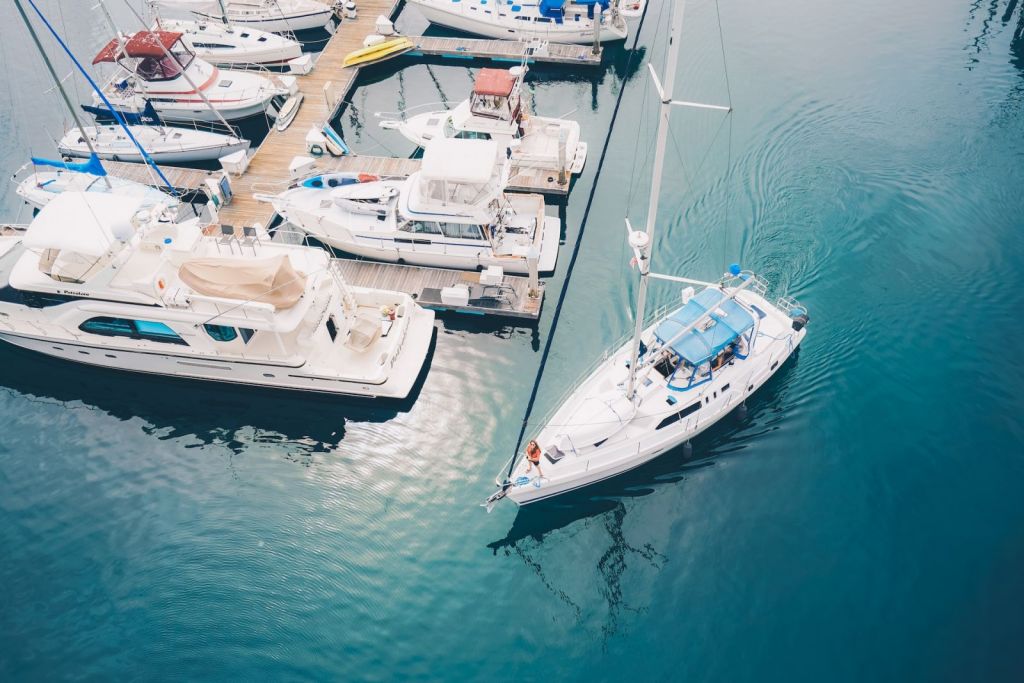
On this page:
Best bluewater sailboats under 50 feet, key features of bluewater sailboats, choosing your bluewater sailboat.
In this section, we will explore 17 of the most famous and best bluewater sailboats under 50 feet. These boats have earned their place in sailing history and are known for their exceptional performance, craftsmanship, and design.
| LOA | Beam Size | Draft Size | Purchase Price | |
|---|---|---|---|---|
| 36 feet | 10 feet, 9 inches | 5 feet, 6 inches | $400,000 | |
| 37 feet | 11 feet, 9 inches | 6 feet, 2 inches | $300,000 | |
| 42 feet | 13 feet, 1 inch | 6 feet, 8 inches | $600,000 | |
| 30 feet | 10 feet, 6 inches | 5 feet, 3 inches | $150,000 | |
| 38 feet | 12 feet, 4 inches | 4 feet, 7 inches | $400,000 | |
| 37 feet | 10 feet, 10 inches | 5 feet, 3 inches | $400,000 | |
| 40 feet | 12 feet | 6 feet | $500,000 | |
| 37 feet | 11 feet, 6 inches | 6 feet | $400,000 | |
| 42 feet | 13 feet, 1 inch | 6 feet, 8 inches | $500,000 | |
| 39 feet | 12 feet, 6 inches | 6 feet, 1 inch | $500,000 | |
| 45 feet | 13 feet, 5 inches | 7 feet, 2 inches | $800,000 | |
| 47 feet | 14 feet, 3 inches | 6 feet, 6 inches | $1.5 million | |
| 37 feet | 11 feet, 6 inches | 6 feet | $100,000 | |
| 44 feet | 13 feet, 4 inches | 6 feet, 6 inches | $800,000 | |
| 49 feet | 14 feet, 6 inches | 6 feet, 9 inches | $1 million | |
| 46 feet | 13 feet, 9 inches | 6 feet, 9 inches | $1 million | |
| 45 feet | 14 feet, 5 inches | 7 feet, 3 inches | $1.5 million |

The Rustler 36 is a classic long-keeled yacht designed for ocean cruising. With a sturdily built hull and excellent sailing performance, this boat is perfect for those looking for a reliable and timeless experience on the open seas.
Design and construction of Rustler 36
The Rustler 36 is a classic design that is known for its seaworthiness and durability. It is constructed with a solid fiberglass hull and a full keel. The deck is also made of fiberglass and is reinforced with a balsa core. The Rustler 36 is designed to be easy to handle and maintain, with a simple rig and a functional interior.
Creature comforts and functionality of Rustler 36
The Rustler 36 is a classic design that is known for its seaworthiness and durability. It features a comfortable interior with ample storage space, a galley, and a head. The cockpit is spacious and well-protected, with easy access to the deck. The Rustler 36 is designed for comfortable long-distance cruising, with features such as a windvane self-steering system and a cutter rig for versatility in sailing.
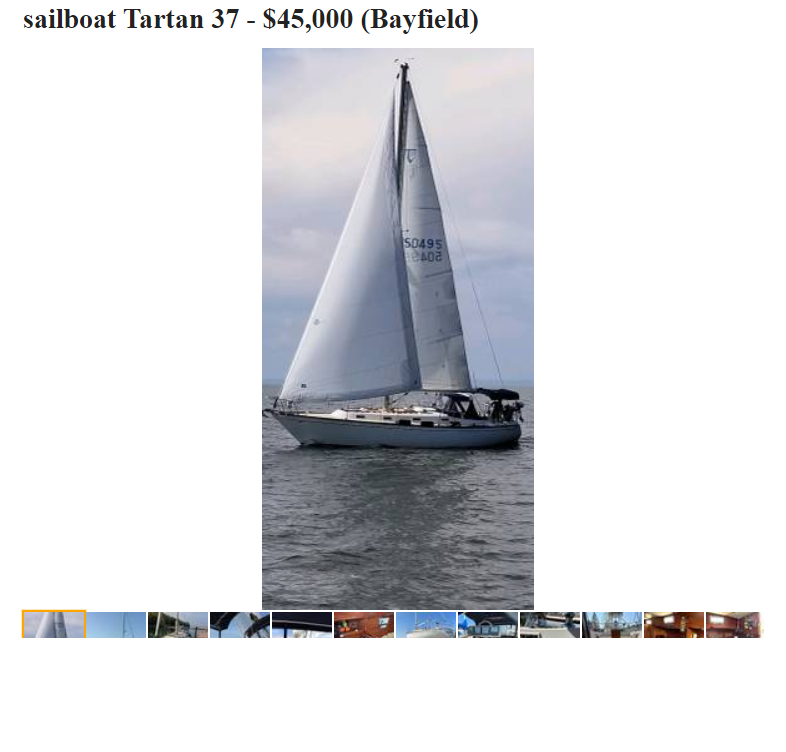
The Tartan 37 is a well-known sailboat for its balance of performance, comfort, and seaworthiness. Designed by Sparkman & Stephens, it is a versatile cruiser with a roomy layout, known for its durability and ease of handling.
Design and construction of Tartan 37
The Tartan 37 is a classic design that is known for its performance and comfort. It is constructed with a solid fiberglass hull and a fin keel. The deck is also made of fiberglass and is reinforced with a balsa core. The Tartan 37 is designed to be fast and easy to handle, with a spacious and comfortable interior.
Creature comforts and functionality of Tartan 37
The Tartan 37 is a classic design that is known for its performance and comfort. It features a spacious and well-appointed interior, with a galley, a head, and ample storage space. The cockpit is comfortable and well-protected, with easy access to the deck. The Tartan 37 is designed for comfortable long-distance cruising, with features such as a windvane self-steering system and a cutter rig for versatility in sailing.
If you're looking for the best bluewater sailboats under 40 feet , here are the top 13.
Hallberg-Rassy 42F
The Hallberg-Rassy 42F is a solidly constructed, luxurious sailing yacht that has gained a reputation for its exceptional build quality and cruising capabilities. This yacht offers incredible comfort and performance on long passages.
Design and construction of Hallberg-Rassy 42F
The Hallberg-Rassy 42F is a modern design that is known for its luxury and performance. It is constructed with a solid fiberglass hull and a fin keel. The deck is also made of fiberglass and is reinforced with a balsa core. The Hallberg-Rassy 42F is designed to be fast and easy to handle, with a luxurious and functional interior.
Creature comforts and functionality of Hallberg-Rassy 42F
The Hallberg-Rassy 42F is a modern design that is known for its luxury and performance. It features a spacious and comfortable interior, with a well-equipped galley, a head, and ample storage space. The cockpit is well-protected and comfortable, with easy access to the deck. The Hallberg-Rassy 42F is designed for comfortable long-distance cruising, with features such as a bow thruster and a cutter rig for versatility in sailing.

Designed by the famous naval architect Robert H. Perry, the Baba 30 is a tough, full-keeled cruiser with a spacious interior. Its solid construction and seakindly characteristics make it a popular choice for bluewater sailing.
Design and construction of Baba 30
The Baba 30 is a classic design that is known for its seaworthiness and durability. It is constructed with a solid fiberglass hull and a full keel. The deck is also made of fiberglass and is reinforced with a balsa core. The Baba 30 is designed to be easy to handle and maintain, with a simple rig and a functional interior.
Creature comforts and functionality of Baba 30
The Baba 30 is a classic design that is known for its seaworthiness and durability. It features a comfortable interior with ample storage space, a galley, and a head. The cockpit is spacious and well-protected, with easy access to the deck. The Baba 30 is designed for comfortable long-distance cruising, with features such as a windvane self-steering system and a cutter rig for versatility in sailing.
Island Packet 38
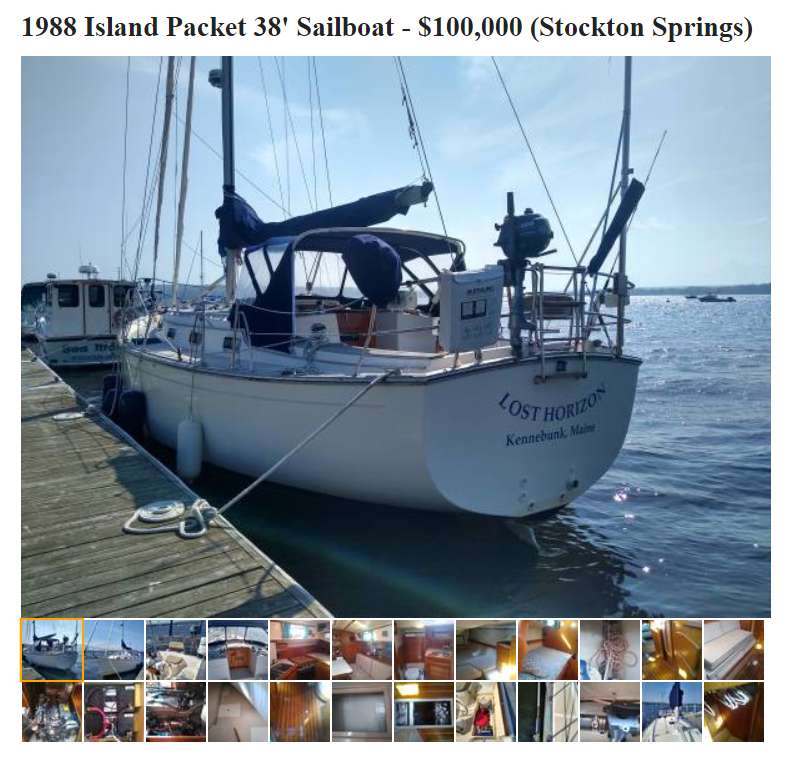
The Island Packet 38 is known for its sturdy construction and comfortable accommodations. With its full-foil keel and cutter rig, this boat offers exceptional stability and handling across a wide range of ocean conditions.
Design and construction of Island Packet 38
The Island Packet 38 is a modern design that is known for its comfort and performance. It is constructed with a solid fiberglass hull and a full keel. The deck is also made of fiberglass and is reinforced with a balsa core. The Island Packet 38 is designed to be easy to handle and maintain, with a spacious and comfortable interior.
Creature comforts and functionality of Island Packet 38
The Island Packet 38 is a modern design that is known for its comfort and performance. It features a spacious and well-appointed interior, with a galley, a head, and ample storage space. The cockpit is comfortable and well-protected, with easy access to the deck. The Island Packet 38 is designed for comfortable long-distance cruising, with features such as a bow thruster and a cutter rig for versatility in sailing.
Pacific Seacraft 37
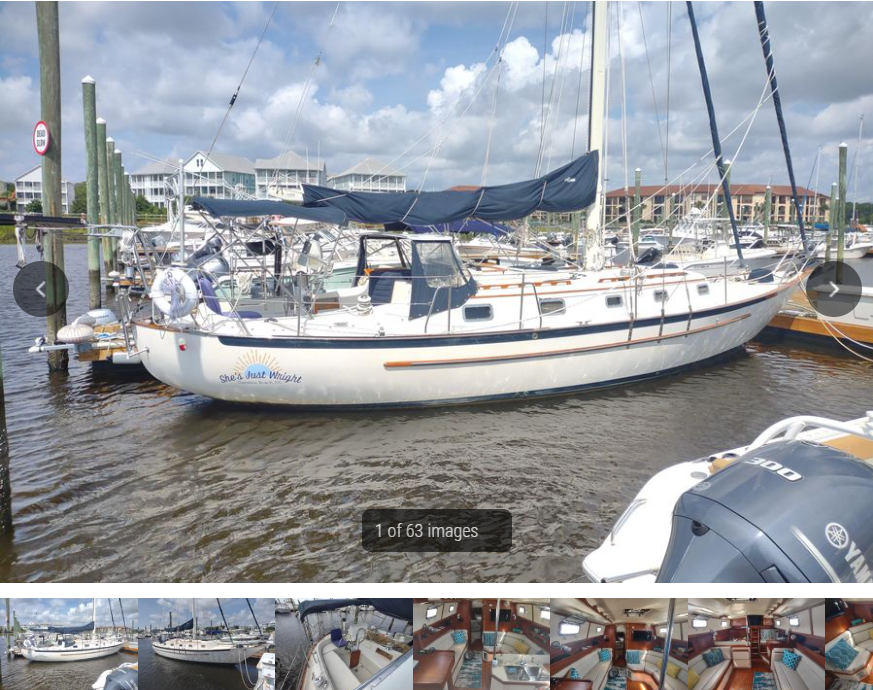
Designed by William Crealock, the Pacific Seacraft 37 is a well-built cruiser designed for offshore sailing. Its solid construction and traditional lines make it an enduring favorite among bluewater sailors.
Design and construction of Pacific Seacraft 37
The Pacific Seacraft 37 is a classic design that is known for its seaworthiness and durability. It is constructed with a solid fiberglass hull and a full keel. The deck is also made of fiberglass and is reinforced with a balsa core. The Pacific Seacraft 37 is designed to be easy to handle and maintain, with a simple rig and a functional interior. It also features a skeg-mounted rudder and a cutter rig for versatility in sailing.
Creature comforts and functionality of Pacific Seacraft 37
The Pacific Seacraft 37 is a classic design that is known for its seaworthiness and durability. It features a comfortable interior with ample storage space, a galley, and a head. The cockpit is spacious and well-protected, with easy access to the deck. The Pacific Seacraft 37 is designed for comfortable long-distance cruising, with features such as a windvane self-steering system and a cutter rig for versatility in sailing.
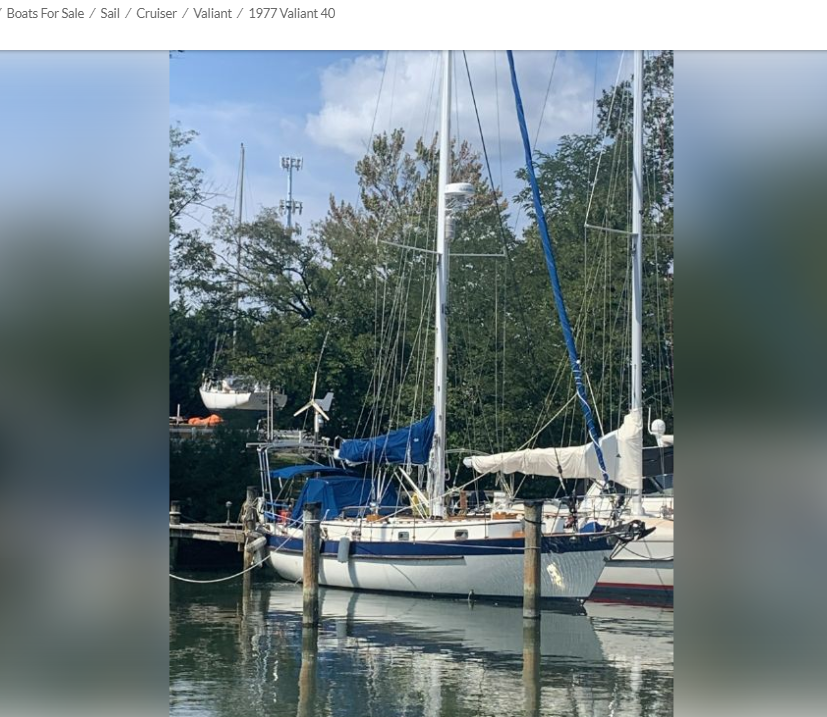
The Valiant 40, designed by Bob Perry, is a classic bluewater cruising sailboat. With a moderate-displacement hull, a powerful sail plan, and spacious accommodations, this boat has earned a reputation for seaworthiness and performance.
Design and construction of Valiant 40
The Valiant 40 is a classic design that is known for its seaworthiness and durability. It is constructed with a solid fiberglass hull and a fin keel. The deck is also made of fiberglass and is reinforced with a balsa core. The Valiant 40 is designed to be fast and easy to handle, with a spacious and comfortable interior. It also features a skeg-mounted rudder and a cutter rig for versatility in sailing.
Creature comforts and functionality of Valiant 40
The Valiant 40 is a classic design that is known for its seaworthiness and durability. It features a comfortable interior with ample storage space, a galley, and a head. The cockpit is spacious and well-protected, with easy access to the deck. The Valiant 40 is designed for comfortable long-distance cruising, with features such as a windvane self-steering system and a cutter rig for versatility in sailing.
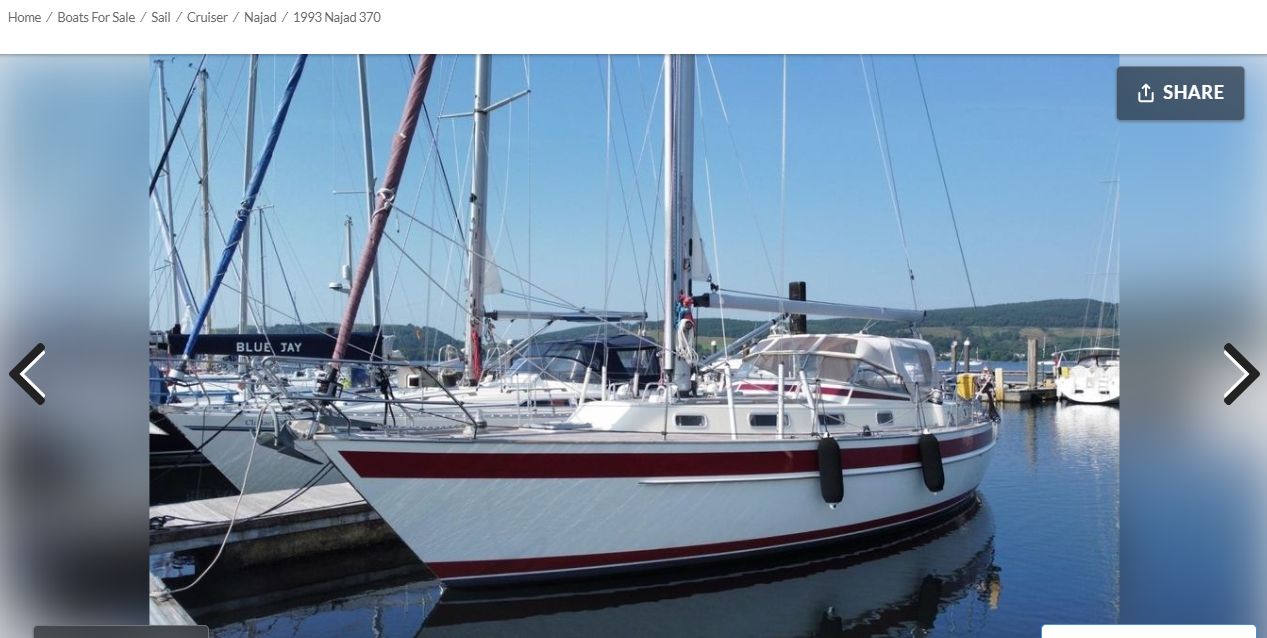
The Swedish-built Najad 370 is a high-quality, luxurious cruiser popular among experienced sailors for its comfortable and spacious interior and top-notch build quality. Its hull design and rigging provide excellent performance and stability on long voyages.
Design and construction of Najad 370
The Najad 370 is a modern design that is known for its luxury and performance. It is constructed with a solid fiberglass hull and a fin keel. The deck is also made of fiberglass and is reinforced with a balsa core. The Najad 370 is designed to be fast and easy to handle, with a luxurious and functional interior. It also features a skeg-mounted rudder and a cutter rig for versatility in sailing.
Creature comforts and functionality of Najad 370
The Najad 370 is a modern design that is known for its luxury and performance. It features a spacious and comfortable interior, with a well-equipped galley, a head, and ample storage space. The cockpit is well-protected and comfortable, with easy access to the deck. The Najad 370 is designed for comfortable long-distance cruising, with features such as a bow thruster and a cutter rig for versatility in sailing.
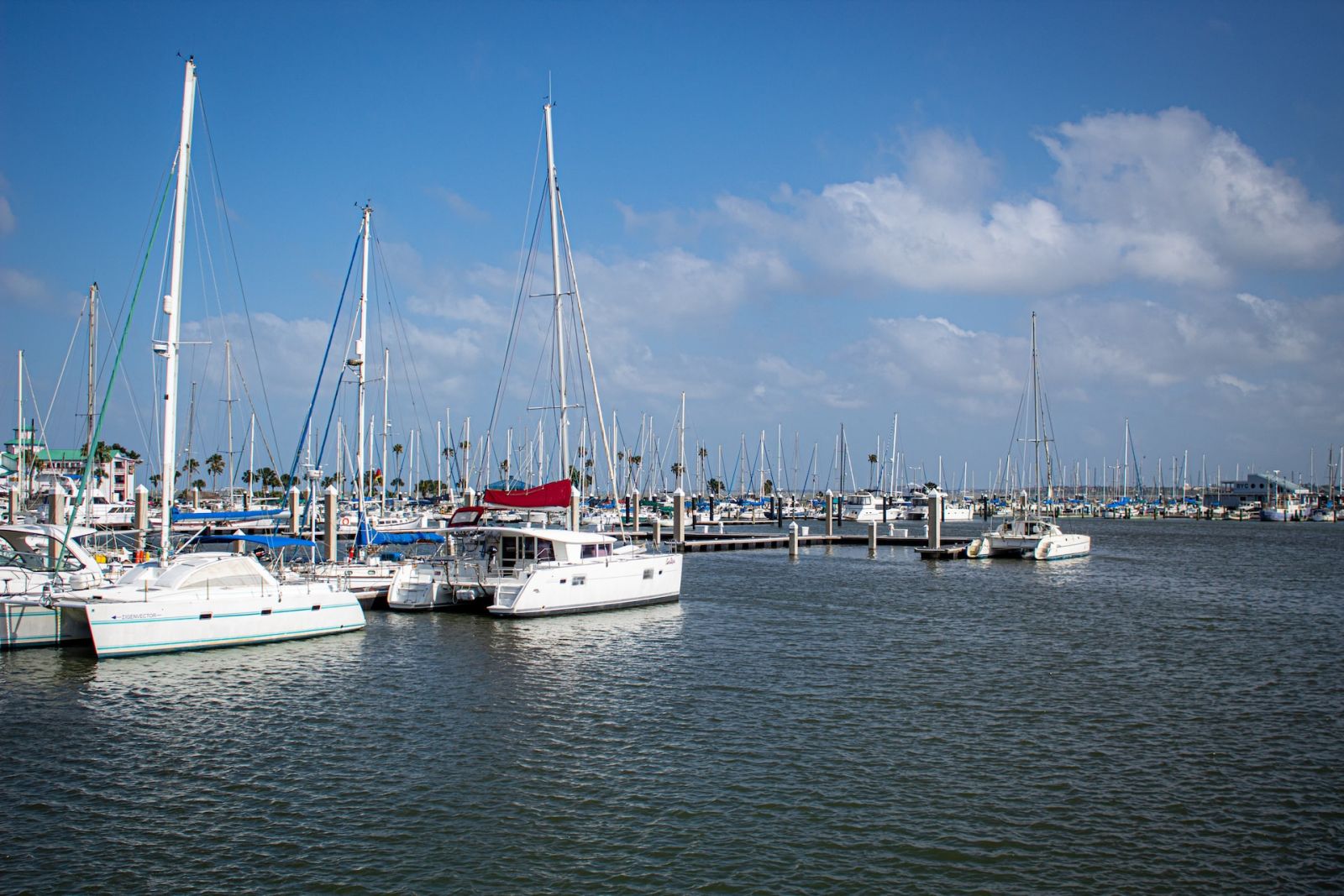
The Moody 42 is a well-built, robust cruiser built for bluewater sailing. With a spacious layout and comfortable accommodations, this boat provides a balance of performance and luxury for extensive cruising.
Design and construction of Moody 42
The Moody 42 is a modern design that is known for its comfort and performance. It is constructed with a solid fiberglass hull and a fin keel. The deck is also made of fiberglass and is reinforced with a balsa core. The Moody 42 is designed to be fast and easy to handle, with a spacious and comfortable interior. It also features a skeg-mounted rudder and a cutter rig for versatility in sailing.
Creature comforts and functionality of Moody 42
The Moody 42 is a modern design that is known for its comfort and performance. It features a spacious and well-appointed interior, with a galley, a head, and ample storage space. The cockpit is comfortable and well-protected, with easy access to the deck. The Moody 42 is designed for comfortable long-distance cruising, with features such as a bow thruster and a cutter rig for versatility in sailing.
If you're wondering what's the best keel design for bluewater sailing , here's our article on it.
Halberg-Rassy 39
The Hallberg-Rassy 39 is a popular bluewater cruiser designed for long-distance voyages. Its solid construction, high-quality materials, and well-designed accommodations make it one of the top choices among seasoned sailors.
Design and construction of Halberg-Rassy 39
The Halberg-Rassy 39 is a modern design that is known for its luxury and performance. It is constructed with a solid fiberglass hull and a fin keel. The deck is also made of fiberglass and is reinforced with a balsa core. The Halberg-Rassy 39 is designed to be fast and easy to handle, with a luxurious and functional interior. It also features a skeg-mounted rudder and a cutter rig for versatility in sailing.
Creature comforts and functionality of Halberg-Rassy 39
The Halberg-Rassy 39 is a modern design that is known for its luxury and performance. It features a spacious and comfortable interior, with a well-equipped galley, a head, and ample storage space. The cockpit is well-protected and comfortable, with easy access to the deck. The Halberg-Rassy 39 is designed for comfortable long-distance cruising, with features such as a bow thruster and a cutter rig for versatility in sailing.
Sweden Yachts 45
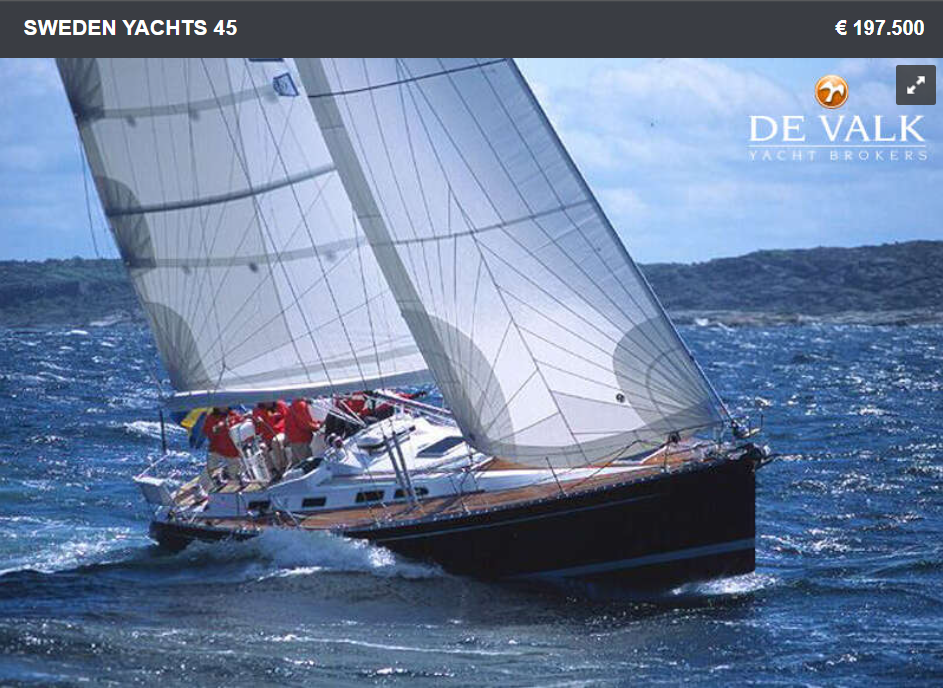
The Sweden Yachts 45 is an elegant and high-performance cruiser, known for its fast and comfortable passages. Its well-built hull and high-quality construction make it a popular choice for long-distance ocean voyages.
Design and construction of Sweden Yachts 45
The Sweden Yachts 45 is a modern design that is known for its luxury and performance. It is constructed with a solid fiberglass hull and a fin keel. The deck is also made of fiberglass and is reinforced with a balsa core. The Sweden Yachts 45 is designed to be fast and easy to handle, with a luxurious and functional interior. It also features a deep bulb keel and a cutter rig for versatility in sailing.
Creature comforts and functionality of Sweden Yachts 45
The Sweden Yachts 45 is a modern design that is known for its luxury and performance. It features a spacious and comfortable interior, with a well-equipped galley, a head, and ample storage space. The cockpit is well-protected and comfortable, with easy access to the deck. The Sweden Yachts 45 is designed for comfortable long-distance cruising, with features such as a bow thruster and a cutter rig for versatility in sailing.
If you're planning to sail solo, here are the best solo bluewater sailboats .
The Boreal 47 is an aluminum sailing yacht designed for bluewater cruising in heavy conditions. With its lifting keel, watertight bulkheads, and solid construction, this boat is highly respected for its safety and durability.
Design and construction of Boreal 47
The Boreal 47 is a modern design that is known for its seaworthiness and durability. It is constructed with a composite hull and a swing keel. The deck is also made of composite and is reinforced with a foam core. The Boreal 47 is designed to be easy to handle and maintain, with a simple rig and a functional interior. It also features a skeg-mounted rudder and a cutter rig for versatility in sailing.
Creature comforts and functionality of Boreal 47
The Boreal 47 is a modern design that is known for its seaworthiness and durability. It features a comfortable and well-appointed interior, with a galley, a head, and ample storage space. The cockpit is spacious and well-protected, with easy access to the deck. The Boreal 47 is designed for comfortable long-distance cruising, with features such as a windvane self-steering system and a cutter rig for versatility in sailing.
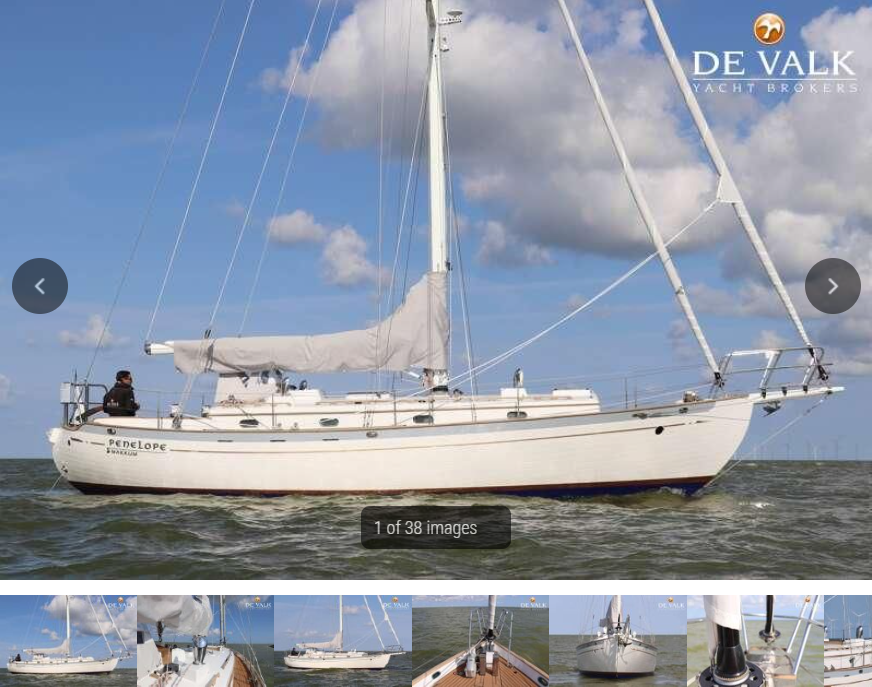
The Tayana 37 is a classic, seaworthy sailboat designed by Robert Perry, known for its durability, comfort, and versatility in sailing. It is a popular choice for long-distance cruising and offshore sailing.
Design and construction of Tayana 37
The Tayana 37 was designed by Robert Perry and first introduced in 1975. It is a full-keeled, heavy displacement, double-ended design that is known for its seaworthiness and durability. The hull is hand-laid fiberglass, with a solid fiberglass laminate below the waterline and a cored laminate above the waterline. The deck is also hand-laid fiberglass, with a balsa core for added insulation and stiffness.
Creature comforts and functionality of Tayana 37
The Tayana 37 features a comfortable and well-appointed interior, with a galley, a head, and ample storage space. The interior is finished in teak and features a traditional layout with a V-berth forward, a main salon, a galley, a head, and a quarterberth aft. The cockpit is spacious and well-protected, with easy access to the deck. The Tayana 37 is designed for comfortable long-distance cruising, with features such as a windvane self-steering system and a cutter rig for versatility in sailing.
Outbound 44
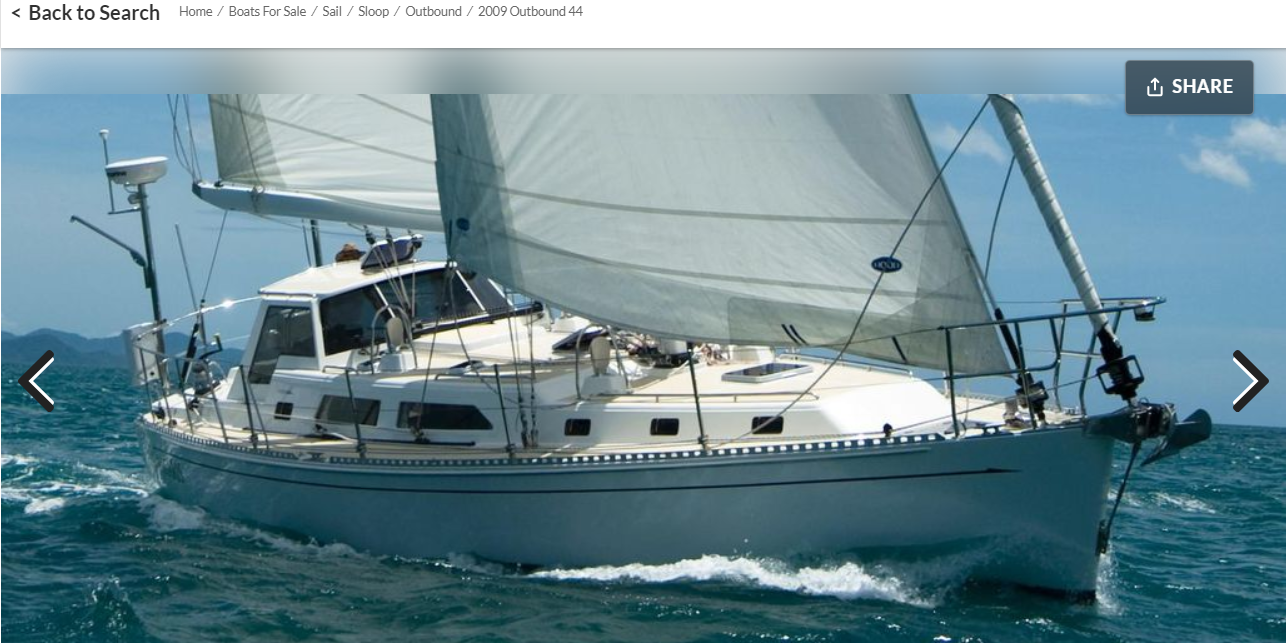
The Outbound 44 is a performance cruiser built for comfortable and fast bluewater sailing. With its powerful sail plan, modern hull design, and thoughtfully laid-out interior, this boat is perfect for those seeking a blend of performance and comfort on the high seas.
Design and construction of Outbound 44
The Outbound 44 is a modern design that is known for its comfort and performance. It is constructed with a solid fiberglass hull and a fin keel. The deck is also made of fiberglass and is reinforced with a balsa core. The Outbound 44 is designed to be fast and easy to handle, with a spacious and comfortable interior. It also features a skeg-mounted rudder and a cutter rig for versatility in sailing.
Creature comforts and functionality of Outbound 44
The Outbound 44 is a modern design that is known for its comfort and performance. It features a spacious and well-appointed interior, with a galley, a head, and ample storage space. The cockpit is comfortable and well-protected, with easy access to the deck. The Outbound 44 is designed for comfortable long-distance cruising, with features such as a bow thruster and a cutter rig for versatility in sailing.
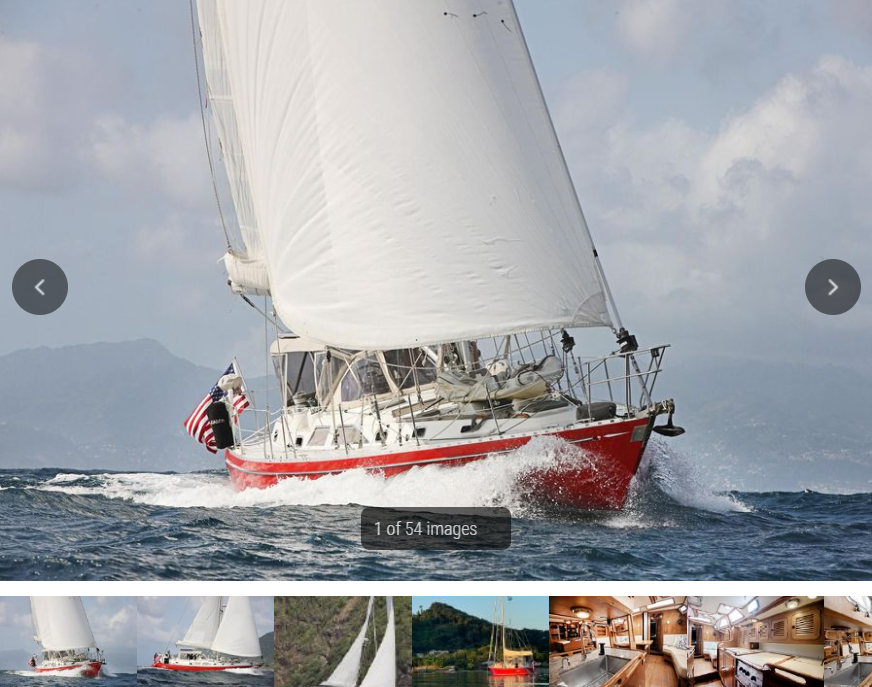
The Hylas 49 is a high-end bluewater cruising yacht known for exceptional build quality and luxurious accommodations. Its powerful sail plan and well-designed hull enable it to provide comfortable and fast passages on any voyage.
Design and construction of Hylas 49
The Hylas 49 is a modern design that is known for its luxury and performance. It is constructed with a solid fiberglass hull and a fin keel. The deck is also made of fiberglass and is reinforced with a balsa core. The Hylas 49 is designed to be fast and easy to handle, with a luxurious and functional interior. It also features a skeg-mounted rudder and a cutter rig for versatility in sailing.
Creature comforts and functionality of Hylas 49
The Hylas 49 is a modern design that is known for its luxury and performance. It features a spacious and comfortable interior, with a well-equipped galley, a head, and ample storage space. The cockpit is well-protected and comfortable, with easy access to the deck. The Hylas 49 is designed for comfortable long-distance cruising, with features such as a bow thruster and a cutter rig for versatility in sailing. The Hylas 49 also features a center cockpit layout for added comfort and protection.
The Malo 46 is a Swedish-built, high-quality bluewater cruiser designed for sailing in varied conditions. Its solid construction, comfortable interior, and impressive performance make it a popular choice among experienced sailors.
Design and construction of Malo 46
The Malo 46 is a modern design that is known for its luxury and performance. It is constructed with a solid fiberglass hull and a fin keel. The deck is also made of fiberglass and is reinforced with a balsa core. The Malo 46 is designed to be fast and easy to handle, with a luxurious and functional interior. It also features a skeg-mounted rudder and a cutter rig for versatility in sailing.
Creature comforts and functionality of Malo 46
The Malo 46 is a modern design that is known for its luxury and performance. It features a spacious and comfortable interior, with a well-equipped galley, a head, and ample storage space. The cockpit is well-protected and comfortable, with easy access to the deck. The Malo 46 is designed for comfortable long-distance cruising, with features such as a bow thruster and a cutter rig for versatility in sailing. The Malo 46 also features a center cockpit layout for added comfort and protection.
Garcia Exploration 45
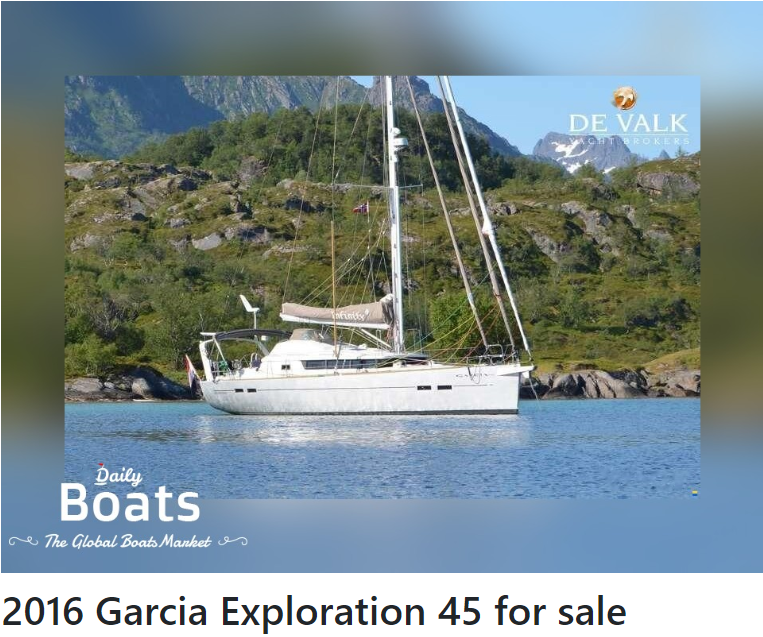
The Garcia Exploration 45 is an innovative, aluminum-hulled cruising sailboat designed for long-distance voyaging. Its reinforced hull, centerboard, and twin rudders make it well-suited for navigating challenging ocean conditions and reaching remote destinations.
Design and construction of Garcia Exploration 45
The Garcia Exploration 45 is a modern design that is known for its seaworthiness and durability. It is constructed with an aluminum hull and a swing keel. The deck is also made of aluminum and is reinforced with a foam core. The Garcia Exploration 45 is designed to be easy to handle and maintain, with a simple rig and a functional interior. It also features a skeg-mounted rudder and a cutter rig for versatility in sailing. The aluminum construction provides added strength and durability, making it ideal for long-distance cruising.
Maintenance costs for the Garcia Exploration 45 are moderate, with regular upkeep required for the engine, rigging, and other systems. The aluminum construction of the Garcia Exploration 45 may require specialized maintenance and repairs.
Creature comforts and functionality of Garcia Exploration 45
The Garcia Exploration 45 is a modern design that is known for its seaworthiness and durability. It features a comfortable and well-appointed interior, with a galley, a head, and ample storage space. The cockpit is spacious and well-protected, with easy access to the deck. The Garcia Exploration 45 is designed for comfortable long-distance cruising, with features such as a windvane self-steering system and a cutter rig for versatility in sailing.
The Garcia Exploration 45 also features an aluminum construction for added strength and durability, and a lifting keel for shallow water exploration. The Garcia Exploration 45 also has a unique feature of a watertight bulkhead forward of the living area for added safety.
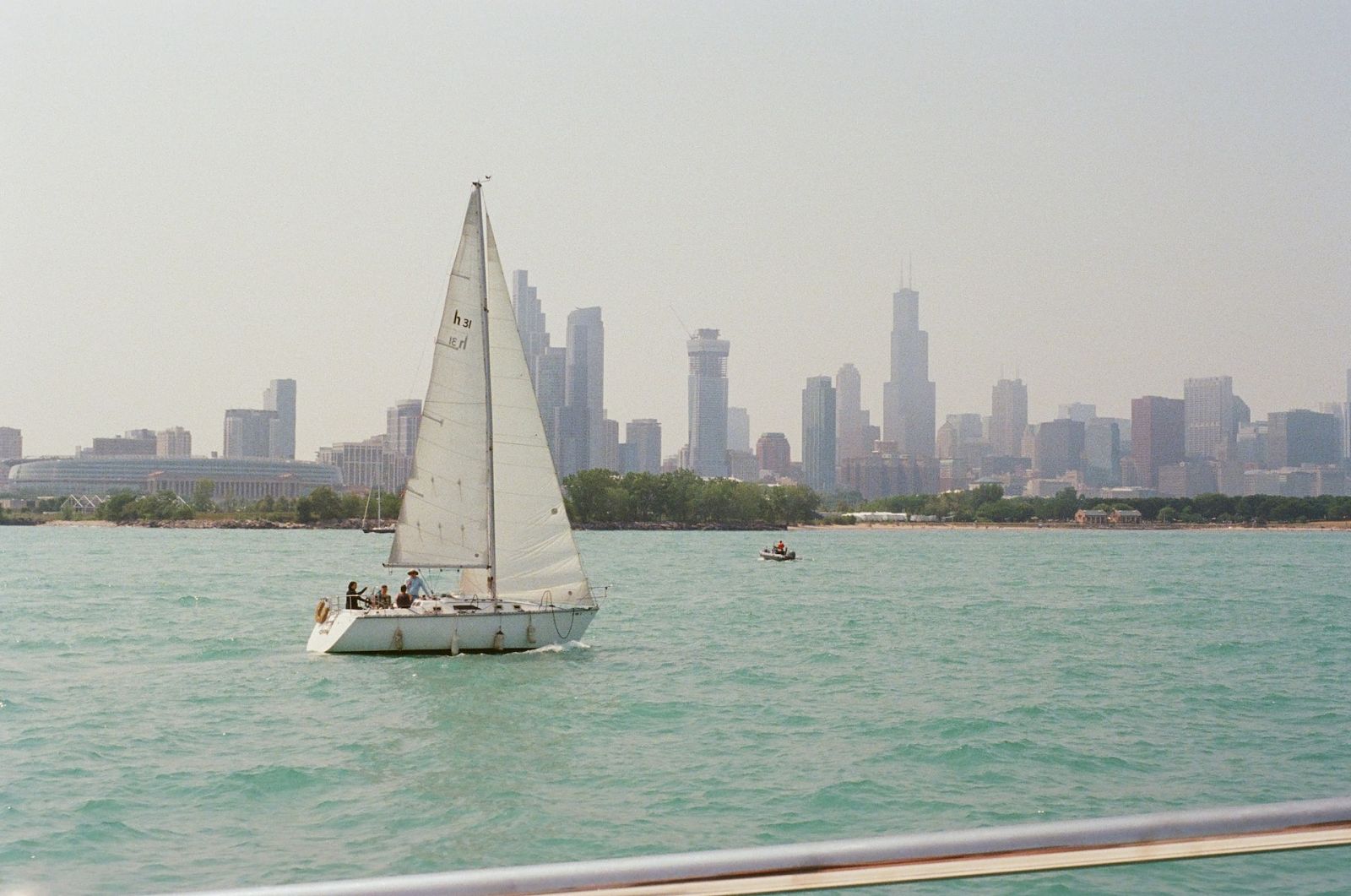
Size and design of the sailboat
The best sailboats in this category offer a well-balanced blend of performance, storage, and living space. As many of these boats are designed for long-distance cruising, having ample storage for provisions, equipment, and personal items is essential. While smaller sailboats might be more affordable and easier to handle, you'll need to strike a balance between size and the level of comfort you desire on extended voyages.
Durability of a bluewater sailboat
These boat's hulls are typically constructed with sturdy, long-lasting materials like fiberglass, steel, or even aluminum. Additionally, the rigging and deck hardware should be robust, capable of withstanding harsh weather conditions and continuous use. As you evaluate potential bluewater sailboats, pay attention to the quality of the craftsmanship and materials used throughout the boat, as this will largely determine its ability to handle the rigors of ocean sailing.
Seaworthiness of the sailboat
This characteristic refers to a boat's ability to handle rough seas, high winds, and other challenging conditions that you might encounter on your journeys. A seaworthy sailboat should exhibit:
- A stable, well-designed hull that can efficiently cut through waves
- A deep, secure cockpit to protect the crew from the elements
- High-quality, easily accessible safety equipment
- Solid, watertight hatches and portlights
When evaluating a sailboat's seaworthiness, it's important to consider its design, construction, and previous ocean-crossing performance, if available.
Comfort and livability of the boat
As you'll likely be spending extended periods at sea, it's essential to have a comfortable living space to make your journey more enjoyable. Key factors in comfort and livability include:
- A roomy, well-ventilated cabin with ample headroom
- Adequate sleeping arrangements for the crew
- A functional galley for meal preparation
- Efficient systems for heating, ventilation, and lighting
To learn more about bluewater sailing , here's our comprehensive article on it.
Let's discuss a few key factors you should look for to find the perfect bluewater sailboat for your needs.
Size matters : As we're focusing on sailboats under 50 feet, it's important to think about how the size of the boat will impact your cruising experience. Smaller sailboats tend to be easier to manage and maintain, while larger ones typically offer more space and comfort. Take into account your sailing skills and the size of your crew when making a decision.
Design and construction : A well-built sailboat plays a vital role in your safety and success when sailing in blue waters. Look for proven bluewater sailboat designs, like those found on Waterborne Magazine's list or Yachting World's selection. A solid construction and well-maintained hull will ensure your boat can withstand the rigors of offshore sailing.
Budget and maintenance costs : It's crucial to consider not only the initial purchase price but also the ongoing maintenance costs when choosing your bluewater sailboat. Established designs often have a good track record for reliability, which can help keep costs down in the long run. Some sailboats under $100,000 can still provide excellent bluewater cruising experiences.
Sailing purpose and destination : Your choice of sailboat will also depend on the type of sailing you plan to do and the destinations you wish to visit. Are you looking for a boat to tackle lengthy ocean passages or a vessel for coastal cruising? Each type might require different features and focuses, so plan accordingly.
Creature comforts and functionality : Finally, think about the amenities you want on your bluewater sailboat—you'll be spending quite some time onboard. A functional galley, comfortable sleeping arrangements, and a functional navigation station are just a few of the features that can make your sailing experience more enjoyable.
Leave a comment
You may also like, 13 world-famous bluewater sailboats under 40 feet.
Bluewater sailboats are designed to handle long-distance cruising in open water, so they need to be tough, reliable, and seaworthy. If you want to set sail on a …
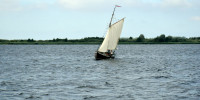
7 Legendary Solo Bluewater Sailboats Worth Considering
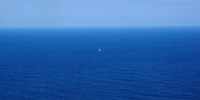
What Is Bluewater Sailing?

What's the Best Keel Design for Bluewater Sailing?

Different Types of Sailing and Racing Explained

10 Best Solo Bluewater Catamarans and What Makes Them Great!
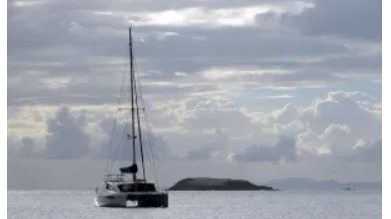
As an Amazon Associate, we earn from qualifying purchases. We may also earn commissions if you purchase products from other retailers after clicking on a link from our site.
Finding the best solo bluewater catamaran is hard, I have been looking for the right balance of lightweight, sturdy, spacious, and compact. But what are the best solo bluewater catamarans on the market?
The ten best solo bluewater catamarans have unique designs, are about 40 feet (12.2m) long, boast an autopilot, all lines to the cockpit, and can provide a safe ocean passage with only one sailor on board. Popular short-handed bluewater cat models include the Manta 42, Dolphin 42, and the FP Belize 43.
Whether you’re looking to buy a brand new catamaran or refit an older one, I know one thing, there’s a solo sailing boat out there for you. Read on to learn about the best models available on the market today, this article is a synergy of my own knowledge together with the experience of expert sailors.
Table of Contents
What To Look For in a Solo Bluewater Catamaran
If you’re sailing single-handed (aka shorthanded or solo), you’ll want an easy-to-maintain boat that allows you to stay at the helm for the bulk of your trip. Typically, you’ll want a catamaran that’s about 40 feet in length (and with a beam to length ratio above 53%) too big of a boat, and it will be hard to handle, and too small it becomes unable to sail large waves and strong winds safely. Sail size plays a big part in how easy your reefing and winching will be.
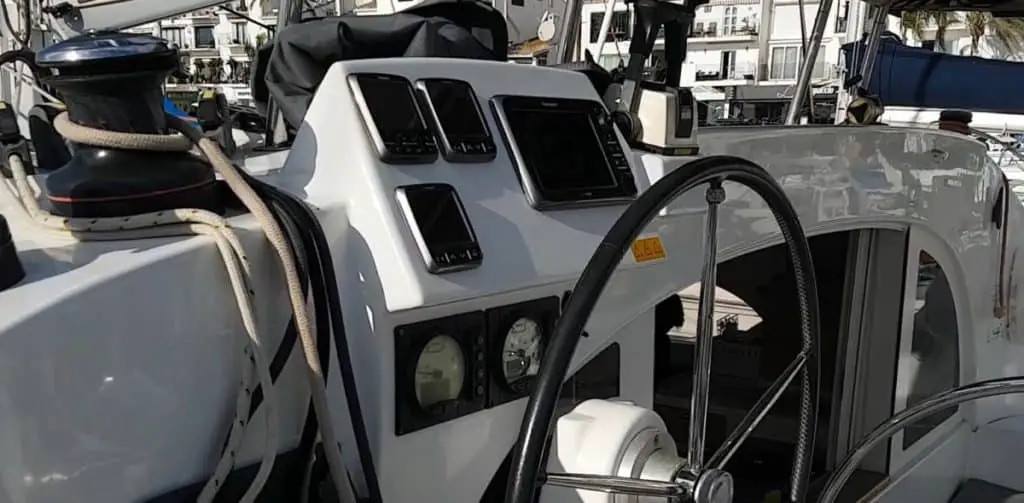
If your boat has an autopilot , which a well-outfitted bluewater boat definitely should, you will have an easier time managing sails and navigation. With autopilot mode enabled, you can cruise along without having to worry about adjusting the course since the autopilot will do this for you. These systems can be standalone or tied into a GPS and make a great asset for single-handed sailors.
Remember that autopilot works better under power than under sail because of the amount of electric power it needs to work. You can increase performance under sail, however, by trimming correctly for a neutral helm.
Autopilot functions can sometimes be managed with a remote controller that you can wear on your wrist or a lanyard for added convenience.
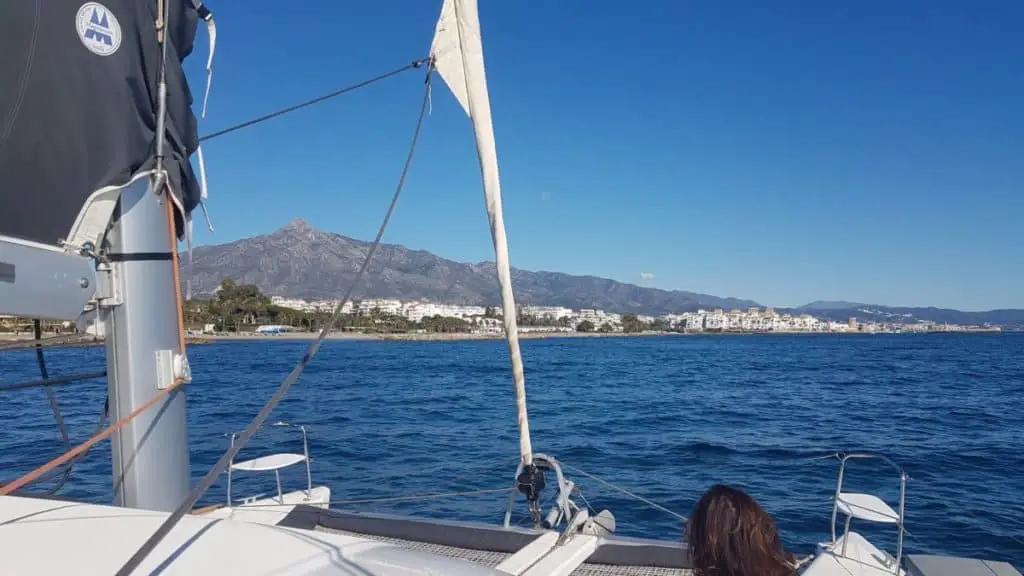
Having a furling headsail can save you effort on the foredeck, and in-mast or in-boom furling makes the job of mainsail reefing more simple. However, this comes with a tradeoff in performance.
A slab-reefed main takes longer to reef, but it’s easier to handle than others because of the lines led aft. The only thing you need to worry about in this case is adding lazy jacks, which will prevent the main from blocking your vision.
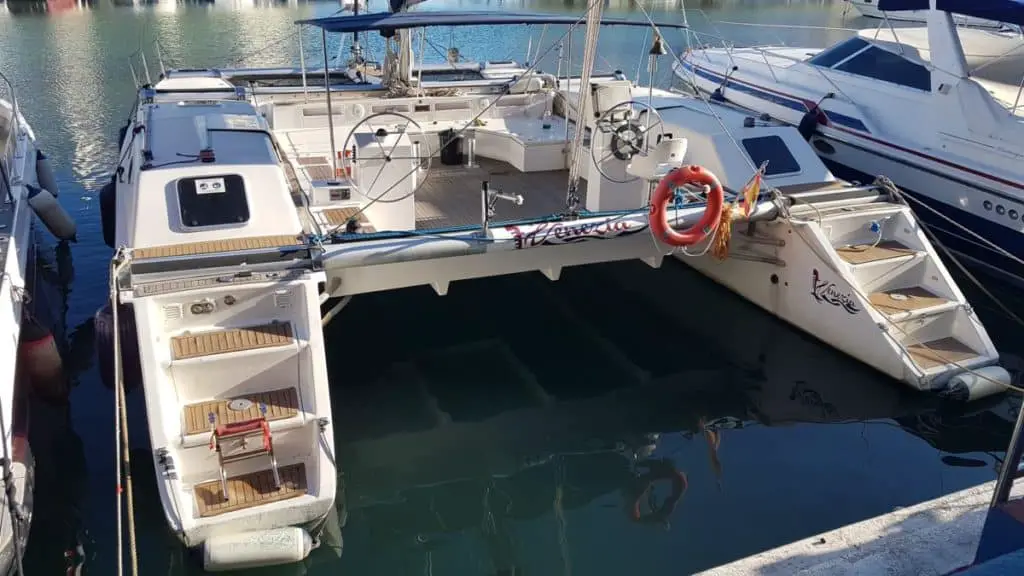
Handling & Safety
One of the riskiest things a solo sailor can do is leave the cockpit , so choosing a ship with quick and easy sail handling is of great importance. This is especially crucial near harbors, where there’s likely to be lots of other boat traffic. The best bluewater catamarans for solo sailors will have lines that run into the cockpit so that you don’t have to abandon your position at all.
Even if you don’t run all your lines to the cockpit, you should at least take the main halyard back with you to the cockpit . This ensures that you’ll be able to stay in control of the boat without having to scramble quickly between stations.
When mooring by yourself, you might find midships cleats valuable in that they provide an anchoring point that keeps your ship from drifting away before it’s been completely secured.
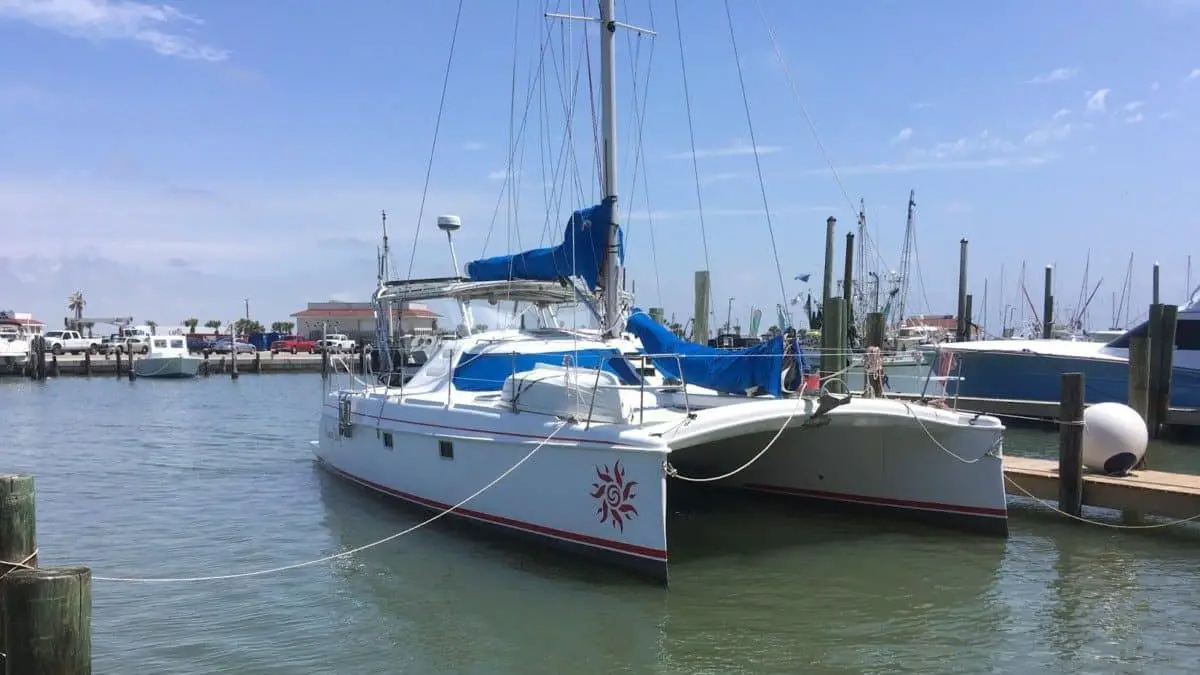
The Manta 42 is a classic multihull catamaran built in the late 1990s to 2000s in Florida. It was designed by French naval architect Eric Lerouge and can be identified by its high bows and curved crossbeam. A Manta 42 is relatively light and has room for added features, like solar panels or dinghies.
What Makes It a Good Solo Sailing Cat
The Manta 42 is great for single-handed sailing because it’s lightweight and easy to handle. It also has pinned aluminum crossbeams rather than conventional aluminum crossbeams, which means that the bows’ twisting forces will be absorbed. But note that this can lead to stress cracks in the bow area.
For more information about the Manta 42, see this video walkthrough:
The Brazil-made Dolphin 42 comes equipped with a daggerboard for stability, which allows it to point higher. This also reduces the amount of wetted surface and allows you to anchor in shallower water. The Dolphin 42 also has a foam core for reduced weight and a lower chance of developing a wet core.
This catamaran is 41 ft. (12.5 m) long, with a displacement of 24,255 lbs (11,001.88 kg). It has two 60 horsepower engines, six feet (1.83 m) four inches (10.16 cm) of headroom, and comes with a built-in GPS-integrated autopilot system and a fully battened mainsail. Additionally, this ship has several household comforts, like hot water, air conditioning, a TV set, and a computer built-in, as well as a refrigerator.
The Dolphin 42 is lightweight, stable, and compact, great for short-handed sailing. Dolphins have been known to perform successful circumnavigations comfortably and safely and are very reliable. However, you should be sure to choose a model that has not had any major modifications to the structure post-production.
Privilege 435
The Privilege 435 is a heavier cruiser meant for long-distance trips , designed according to the French tradition of multihull ships. These have been on the market for about 30 years and are made by large producers like Lagoon and Nautitech. The Privilege 435 can be purchased as an owner version or with four cabins and four head/showers.
This catamaran is low-slung and has low wind resistance. Its windows come with internal shades and optional outdoor shades, but without “eyebrow” overhangs, the saloon can become quite hot in the tropics. Still, this boat is of very high quality and has a solid, stylish finish.
The Privilege 435 is a luxurious choice, built for long-distance cruising . This catamaran is well-made, will not give in easily to stress, and has low wind resistance for increased efficiency. If you’re looking for a high-end boat with a stylish design, this could be the choice for you.
Fountaine Pajot Belize 43
The Fountaine Pajot Belize 43 is perhaps the most popular catamaran on the market today. It has a full-length owner suite with a clever design that pairs a curvaceous saloon with a wraparound dinette and nav area. The galley comes with wraparound windows, and the outer deck is easy to walk on.
The Fountaine Pajot Belize 43 has a foam core, which means it’s lightweight and unlikely to develop a wet and soon rotten core. It makes for a great solo sailing boat due to its ease of use, stability, and comfortable design. This catamaran is especially good for long travels due to its comfortable and spacious layout. It would make for a great single-handed sailing trip for a family.
Nautitech 44
The Nautitech 44 was one of the first catamarans with an integrated hardtop bimini , one of the many ways this design set the trend for short-handed sailing catamarans. It has two modes, one that allows single-wheel steering at the bulkhead and another that allows twin wheel steering closer to the stern. The Nautitech 44 also has slim hulls, which means more speed.
This ship is produced out of Rochefort sur Mer, a hub for naval architecture and shipbuilding. Nautitech was the first luxury boating company to introduce the concept of open living onboard, combining the saloon and cockpit to make one functional and spacious living area.
Because the Nautitech 44 has two modes for steering, it allows each sailor to choose the steering method that best fits their wants and needs. Both modes have their advantages, but many prefer the sailing sensation of the two-wheel approach. This ship’s design also allows the saloon door to be left open even in the heavy rain, without fear that water will leak inside.
The combined saloon and cockpit also make for a comfortable trip for the single-handed sailor, allowing you to enjoy your leisure room without leaving your ship’s control room.
The Lagoon 440 has a lot of volume for a single-handed sailing catamaran and a signature squared-off structure. This ship isn’t lightweight, but the saloon is spacious and accommodating to furniture. One version of the Lagoon 440, the flybridge version , is a difficult ship for shorter sailors to operate, simply because of a high boom position.
The Lagoon 440 is a good solo sailing boat if you’re looking to go on a long-distance trip, spending lots of time out at sea. It isn’t particularly fast, but it’s very stable, easy to use, and has lots of room for furniture and supplies. Several versions of this model are available on the market, all of which have slightly different layouts.
This catamaran is 49 ft. (14.94 m) long , bigger than most solo sailing ships. However, it does come with an autopilot system that makes solo sailing easier, as well as a GPS, radio, and built-in radar detector.

The Leopard 45 is a South African-made multihull ship on the market since the late 1990s. Most Leopard 45s on the market are four-cabin versions, although a three-cabin version of the ship also exists. It also has a large, open-plan saloon with a large galley and a trademark rear arch.
See the Leopard 45 in action in the following video:
What Makes It a Good Solo Sailing Boat
The Leopard 45 is a good solo sailing boat because it has a sturdy fractional rig for stability and is easy to use. It also has an open cockpit, which makes circulation easy. And you’ll find the engine access points on the outside of the ship, which makes maintenance easier.
The Voyage 44 is a South African-made catamaran with a rugged design, considered a cost-effective option with superior sailing performance relative to other ships sold at the same price point. This boat has a particularly wide beam, which makes for more stability and more space. However, it also has a very exposed low bridge deck to be aware of.
The Voyage 44 makes a great single-handed sailing boat because it’s so stable with its ultra-wide beam. It makes the ship very easy to steady, even for beginners. While it’s not particularly lightweight, it’s built with an aerodynamic design, enough so that it can move along at a steady clip.
What is the largest boat one person can sail?
Outremer 45
The Outremer 45 is a product of La Grande Motte in the South of France, built with a well-executed, smart design. The hulls and deck are made with vinylester and a divinycell core, and its high-load areas are suited with carbon for extra durability and rigidity. You’ll find secure glassing at the joints of the ship rather than glue that could come undone.
The Outremer 45 has a classic multihull structure, small volume, and incredible responsiveness to the helm. It has a high bridge deck clearance , as well as well-proportioned bows. It also has a balanced weight distribution to prevent pitching and encourage steady motion forward. This is a pricier option, but an option with many great features.
The Outremer 45 is a good solo sailing ship because it’s very compact and easy to manage. Its proportionate design means more stability and less pitching. It’s a very light ship, so it’s likely to move faster through the water than its competitors.
The Prout 45 is built for long distances rather than speed. It’s a heavy, sturdy boat that you’ll have an easy time guiding without worrying about pitching.
The Prout 45 has space for a small stateroom in the center of the boat and comes in both owner and four-cabin versions. It has next to no bridge deck clearance due to a “nacelle” that runs along the main deck from end to end. This adds headroom and buoyancy and adds drag that can take away from the experience by slowing you down and creating noise.
If you want to better understand the difference between a solid foredeck and a net, a.k.a. trampoline, then I suggest you read my article comparing the two.
The Prout 45 has smaller, more manageable sails than other options and allows easy access to the rigging, which runs right into the cockpit. It’s a heavier ship and one that’s easy to keep stable. It’s a great ship for a solo sailor because you can do most of your work right from the cockpit, and it’s a sturdy catamaran that’s unlikely to pitch.
Tips for Single-Handed Sailing
Sailing solo is a great way to get to know your boat and is necessary for many people. The idea is to be able to cruise, whether it be close to coasts or at high seas, without needing a crew on board. It’s a challenge, so it’s best not to embark on a trip single-handed unless you have a good amount of experience and feel confident doing so.
Before heading out single-handed, you should test yourself with an inactive crew. Go together when the weather is nice and have them be your backup while you try solo sailing and see how it feels.
Make sure that you’ve also physically trained for the level of fitness you’ll need to operate the ship, especially if you’ll be going out on a longer excursion than you’ve done in practice. Taking care of a ship is demanding work, and you can quickly burn out if you’re not ready for it.
Preparation
Prepare yourself thoroughly for the sail, study the route, read sailing guides for every area you’ll be in, and make yourself aware of any dangers that may arise. Become aware of possible shelters, and know where you’ll be entering and exiting the harbors. It’s a great idea to save these locations as waypoints on your GPS, just in case.
I asked catamaran sailors what their favorite books are, Here is the list: 15 Best Books about Cruising Cats!
A great way to prepare yourself for possible situations is by reading books, I have bought plenty of books and I list some of my favorite on this page . So far I haven’t found any good solo bluewater books that I would recommend, but here are two catamaran cruising books that I have read and that I feel comfortable recommending. I suggest you get both of them since they complement each other.
Multihull seamanship is very informative but offers boring graphics, and Cruising guide for sailors is inspirational with beautiful pictures.

Make sure you choose a good weather window. Avoid sailing a few hours ahead of a forecast gale at all costs. Instead, seek a time with a reasonable breeze and a calm sea. You can gradually introduce yourself to different weather conditions, but remember not to challenge yourself too much too quickly.
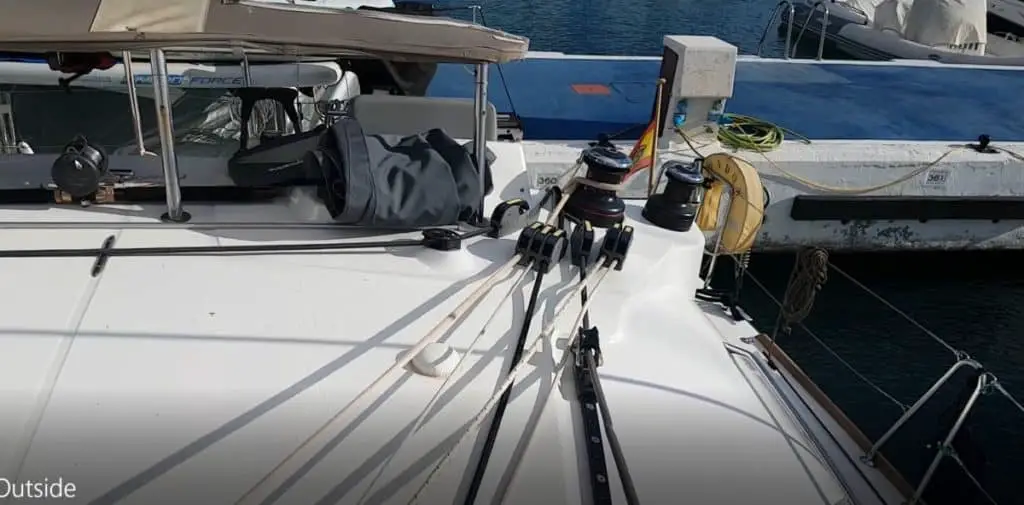
All lines To The Cockpit
The cockpit layout plays a big role in determining whether a catamaran can work for solo sailing . You’ll need to see a chartplotter on deck so that you can keep course without needing to go to reference chart tables. Having a visible battery monitor is also important, especially if you’re going to use autopilot, which pulls significant power from the battery.
Don’t forget to also bring sunscreen, water, and a compass, which you should have on hand at all times. Having a good communication system available in the cockpit is also a good idea. In case of emergency, you should have a radio that you can use to call for help, as well as flares and binoculars.
The ten best solo bluewater catamarans each offer a positive and unique experience for the sailor, and the best one for you depends on your needs, wants, and preferences. Those looking to make a longer trip will need something different than those looking for speed, but every solo sailor has some common needs, like the need for a stable and easy-to-manage vessel.
Owner of CatamaranFreedom.com. A minimalist that has lived in a caravan in Sweden, 35ft Monohull in the Bahamas, and right now in his self-built Van. He just started the next adventure, to circumnavigate the world on a Catamaran!
2 thoughts on “ 10 Best Solo Bluewater Catamarans and What Makes Them Great! ”
Cool that really helps, thank you.
I’m glad you appreciate it!
Leave a Reply Cancel reply
Your email address will not be published. Required fields are marked *
Save my name and email in this browser for the next time I comment.
Recent Posts
Must-Have Boat Gear for Catamaran Sailors!
Sailing is probably the most gear-intensive activity I've ever done; there are so many decisions to be made about what gear to buy now, for tomorrow, and what to definitely never buy. The gear on...
6 Best Trailerable Trimarans For Bluewater and Coastal Sailing
Having a boat costs a lot of money, even when you are not using it, marina fees, etc. And once it is in the water most sailors never go very far from their "home marina" and sailing will be somewhat...
Yachting World
- Digital Edition

10 must-read tips for Bluewater cruising
- Joshua Shankle and Rachel Moore
- November 30, 2023
After a decade aboard his yacht bluewater cruising, Joshua shankle shares his 10 top tips gained over 10 years on the water

Bluewater cruising can be a transformative journey, filled with remarkable moments and unforgettable adventures. But challenges come hand in hand with this way of life: from the constant maintenance and repairs, to the never-ending cleaning and polishing, liveaboard sailing can sometimes be exhausting and frustrating. Over the past decade, I’ve experienced both the highs and lows of this lifestyle, falling in and out of love with our boat countless times.
Inevitably, just when the frustrations threaten to overwhelm me, something magical happens and we are blessed with one of those days where everything falls into place. When conditions are ideal, the boat is cutting through the water, and all feels right with the world once again.
These are the days that reignite my passion for sailing and reaffirm my decision to embrace this lifestyle. We’ve discovered that the longer we spend on the water, the more frequently we experience these exceptional days, which is why we choose to never leave it.
While I wouldn’t consider myself an expert sailor, I am fortunate to surround myself with individuals who possess a wealth of knowledge and experience. Seeking advice and insights from those who’ve spent decades exploring the seas has been invaluable. Countless evenings, we’ve had the privilege of sharing stories and sundowners with couples who have dedicated their lives to cruising, some for over 30 years, a few fortunate souls for over 40. Their tales and experiences have sparked vivid dreams within me of my wife Rachel and I forging a similar life for ourselves.
For 10 years we have carved our own path amidst the vast ocean. So while our knowledge is based on our own experiences and what has worked for us, here are a few insights that I wish I’d known when we first set out on this journey:

You can grow food onboard as well as buying what you need
10 bluewater cruising tips
You can find food everywhere, so prioritise your favourites. Before departing from our home port in the USA, Rachel and I vacuum-sealed what would turn out to be nearly a year’s worth of flour, rice, and sugar. We also stowed away an abundance of canned food ‘just in case’, but we carried very little of our preferred snacks and other products. Every port we have visited has had the basics, but it was the hard-to-find favourites that we missed most. Make sure to make room for them in your provisions.

Buy the largest watermaker you can afford, and know how to service it. Photo: Joshua and Rachel Shankle
Consider upgrading to a larger watermaker , or if you’re planning to purchase a watermaker, choose the largest or highest output unit that fits your budget. We used to have a 7gph unit, which was energy-efficient but required constant running.
Now, with our 40gph watermaker, we only need to listen to it for two hours a week. In my experience, larger units also produce cleaner water and encounter fewer issues. Being able to rinse off as often as you like, wash gear and clothes, or even wash down the boat after a long bash to windward, all help to make life more enjoyable and prolongs the life of your gear sustainably.

Wear long-sleeved and hooded sun shirts rather than constantly having to apply chemical sunscreen. Photo: Joshua and Rachel Shankle
Sun protection
Long-sleeved, hooded sun shirts are better than sunscreen. Instead of constantly applying greasy sunscreen to your arms, neck, and ears, wear an SPF-rated shirt. They offer more comfort, protect the environment, and prevent your cushions and pillows from becoming oily. We also wear sun-protection buffs, trousers, and gloves for long days out on the water.

A powerful outboard for your tender will repay its cost many times over by making it quicker and safer to head for a beach, lug provisions back to the boat or even tow a yacht. Photo: Joshua and Rachel Shankle
Ship-to-shore
Get the largest outboard engine your dinghy can handle. Having a fast tender allows you to anchor in protected areas and easily reach fun surf breaks, excellent snorkelling spots, and transport all your gear and big provision runs. It also serves for safety and emergencies. On several occasions we’ve tied our tender alongside a sailboat with a dead diesel engine and towed the disabled vessel to safety.

Your cockpit can be your living room – make it comfortable with plenty of shade. Photo: Joshua and Rachel Shankle
Outdoor living
Treat your cockpit as your living room. We sail hundreds or even thousands of nautical miles to reach picturesque anchorages, and the place we want to sit and enjoy the well-earned view is the cockpit.
Size matters less than comfort, so add plenty of cushions, pillows, and shades to protect you from the tropical sun. It will create a more enjoyable space to relax during the day or entertain late into the evening (OK, usually no later than 2130 for most of us!).

Some jobs are more time-consuming to do afloat, so up-spec power and water generation for ease. Photo: Joshua and Rachel Shankle
Spares and repairs
Keep well-documented manuals for each system on board. This will help you find part numbers, service intervals, and essential information when you need it most. Even better, download the PDF versions and keep them on a hard drive or phone. Often these are searchable documents making it easier to find relevant information.

Photo: Tor Johnson
Learn how to utilise navigation tools like Open CPN, Google Earth, and Ovital Maps. Being able to access high-definition satellite photos of passes, islands, and anchorages before arrival will assist you in planning anchorages, avoiding hazards, and navigating effectively, especially in challenging conditions and areas that are poorly charted.
Running multiple routes over each other, especially in bommie-infested lagoons like French Polynesia’s Tuamotu islands, provides peace of mind and eases navigation in poor light or inclement weather.

Almost inevitably you’ll use more power than you first thought, so prioritise generation and storage. Photo: Joshua and Rachel Shankle
Energy consumption
Prioritise power generation. Assess your energy consumption and invest in solar power, wind generators, and lithium batteries to keep your boat comfortably off-grid for longer periods, reducing the need for generator use. When we departed from Ventura, California, Agápe had 520W of solar power charging 630Ah of AGM batteries.
We made every effort to keep our batteries above 60% charge and rarely let them drop below 50%, but it meant running the generator every fourth or fifth day for a few hours. Soon after, we realised our power consumption was higher than expected. To live off-grid comfortably and make cruising sustainable for Rachel and me, we needed more power. Now, Agápe boasts 875W of solar power and 500Ah of lithium batteries.

Preventative maintenance – perhaps an hour a day – helps keep the boat fully functional. Photo: Joshua and Rachel Shankle
Maintenance
Practise preventive maintenance for more free time. It takes about an hour each day to keep the boat fully functional, in good working order, and aesthetically pleasing. If you skip a few days, you might not notice the difference, but you’ll eventually fall behind.
Every morning, before the heat of the day, one of us walks around the deck from the starboard side of the cockpit to the bow and then down the port side. Whenever we spot something that needs attention, we stop and make it our task for the day. Sometimes, we complete the entire loop and find everything working perfectly, with all the oil changes done and tarnished areas sparkling. At that point, grab your mask, fins, and scrubbing brush, and give the waterline a quick wipe. Now you’re ready to enjoy the day.

Slow down to really appreciate the beautiful places you’ll visit, and don’t always be in too much of a hurry to move on. Photo: Joshua and Rachel Shankle
Take your time
Slow down. In our first three years, we felt the need to constantly keep moving. There were so many beaches to sit on and reefs to dive that we felt compelled to maintain a fast pace to try and see them all. However, relocating our entire home every three days proved to be exhausting.
Once we embraced a slower pace, we not only began to appreciate the magnificent places and experiences we were encountering more, but also found joy in the act of cruising itself. Slowing down has proven to be the most important factor in sustaining our cruising lifestyle.
Over the years we’ve witnessed many cruisers burn out after just a year or two, even though they had several more years of cruising ahead of them. Some people attempt to cram too much into a short itinerary, leaving them feeling overwhelmed and drained, which prevents them from truly enjoying their experiences and inevitably makes them yearn for the comforts and routines of life on land.
If you enjoyed this….
Yachting World is the world’s leading magazine for bluewater cruisers and offshore sailors. Every month we have inspirational adventures and practical features to help you realise your sailing dreams. Build your knowledge with a subscription delivered to your door. See our latest offers and save at least 30% off the cover price.
- Boats for Sale
Bluewater cruiser for sale (sail)
- Bluewater cruiser
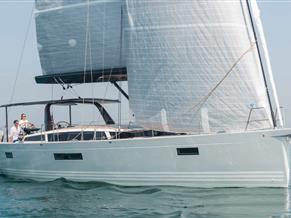
What is a Bluewater cruiser?
A bluewater cruiser is a type of boat designed to travel long distances on the open ocean. These crafts are typically more robust and larger than recreational vessels, with full navigation systems and ocean-ready cruising amenities to keep passengers safe and comfortable during extended voyages. Bluewater cruisers are typically designed with a deep-keel hull and higher sidedrops to prevent capsizing in rough conditions—an important feature for enduring moments of heavy weather on the high seas. With ample storage capabilities and broad-reaching sailing capabilities, a bluewater cruiser is the perfect vessel for ocean exploration.
Which manufacturers build bluewater cruiser sail boats?
Manufacturers that produce bluewater cruiser sail boats include Beneteau , Hanse , Jeanneau , Nautor Swan and Dufour .
How much does a bluewater cruiser sail boat cost?
A used bluewater cruiser sail boat on TheYachtMarket.com ranges in price from £4,950 GBP to £5,850,000 GBP with an average price of £476,000 GBP . Factors including the condition, age, model and specification will affect the price of a bluewater cruiser.
Sign up to our newsletter
By submitting this form, you agree to our Privacy & Cookie Policy
Change units of measure
This feature requires cookies to be enabled on your browser.
Show price in:
Show lengths, beam and draft in:
Show displacement or weight in:
Show capacity or volume in:
Show speed in:
Show distance in:

Alternatively,
- Register with Facebook
- Register with Google
Why Boatshed?
View all of your boats statistics in real time
Create a virtual "watch" on boats you're interested in
Refer a boat and earn up to 20% of the brokers commission
Language & Currency
Search our catalog, go direct, enter a boat reference, offshore/blue water cruiser boats for sale search by keyword, my selections, refine search.
- United Kingdom 100
- Saint Lucia 17
- United States 15
- Gibraltar 6
- South Africa 6
- Virgin Islands (British) 5
- Trinidad And Tobago 3
- Antigua And Barbuda 1
- Netherlands Antilles 1
- 7 - 9 Meters 12
- 9 - 11 Meters 60
- 11 - 13 Meters 65
- 13 - 15 Meters 46
- Over 15 Meters 36
- £10,000 - £20,000 19
- £20,000 - £30,000 19
- £30,000 - £50,000 32
- £50,000 - £100,000 60
- £100,000 - £200,000 40
- > £200,000 38
- Fin and Bulb 42
- Long Keel 37
- Multihull 25
- Wing Keel 7
- Lifting Keel 6
- Full-Displacement 2
- Semi-Displacement 1
- Shallow Long with Bilge keel 1
- Shallow Long Keel 1
- 5 - 10 years 26
- 10 - 20 years 40
- 20 - 30 years 42
- > 30 years 119
- Composite 7
- Aluminium 6
- Wood Laminate 3
- Ferro Cement 2
- Foam Core 2
- Beneteau 27
- Jeanneau 19
- Westerly 10
- Bruce Roberts 4
- Elizabethan 3
- Fountaine Pajot 2
- Hallberg Rassy 2
- Island Packet 2
- Royal Huisman 2
- Southerly 2
- Sparkman & Stephens 2
- St Francis 2
- Van de Stadt 2
- Alan Buchanan 1
- Aluminium 1
- Barnett Offshore 1
- Camper & Nicholson 1
- Cape Dory 1
- Cardinal Sloop 1
- Catalina Yachts 1
- Aft Cabin 57
- Live-aboard 57
- Center Cockpit 28
- Aft Deck 18
- Deck Saloon 11
- Pilot House 11
- Walkaround 6
- Flybridge 3
- Wheelhouse 3
- Cruiser Stern 2
- Boatshed Wales 21
- Boatshed St Lucia 18
- Boatshed Essex 14
- Boatshed Greece 10
- Boatshed Grenada 10
- Boatshed IOW 8
- Boatshed Suffolk 8
- Boatshed BVI 7
- Boatshed Gibraltar 7
- Boatshed Hamble 7
- Boatshed Port Townsend 7
- Boatshed Portsmouth 7
- Boatshed Riviera 7
- Boatshed Costa Brava 6
- Boatshed Eastbourne 6
- Boatshed New Build Boats 5
- Boatshed Scotland 5
- Boatshed Seattle 5
- Boatshed Southampton 5
- Boatshed Sud Med 5
- Boatshed Brighton 4
- Boatshed Cornwall 4
- Boatshed Yorkshire 4
- Boatshed Barcelona 3
- Boatshed Colombia 3
- Boatshed Phuket 3
- Boatshed Trinidad 3
- Boatshed La Rapita 2
- Boatshed Lancashire 2
- Boatshed Midi Canals 2
- Boatshed Plymouth 2
- Boatshed Texas 2
- Boatshed Antigua 1
- Boatshed Florida Keys 1
- Boatshed Panama 1
- Boatshed Poole 1
- Boatshed Port Solent 1
- Boatshed South Africa 1
- Boatshed St Maarten 1
- Sold / Unavailable Boats
- Boats with 360° Photos
- Boats with Videos
Boatshed Archive
View our full archive of over 20,000 previously listed boats.
Your filtered results: Reset
St francis 50, st francis 46, royal huisman custom, maxi dolphin 65, maverick catamarans 440 cruise ready custom, pilot house ketch - luxurious houseboat/blue water cruiser, lagoon 450 catamaran, fountaine pajot helia 44, nicholson 58.
Results 1 - 15 of 219
Create Alert
Please enter a name for your alert

Yachts for Sale Location: Moscow
Unfortunately, we currently do not have any yachts in Moscow listed in our inventory. However, our knowledgeable brokers can assist you in locating and acquiring the perfect vessel, even if it's not currently advertised on the market.
Don't hesitate to reach out to our team of experts. They have extensive connections and resources to help you find your dream yacht, tailored to your specific preferences and requirements.

IMAGES
VIDEO
COMMENTS
Arcona 435. The Performance Cruiser winner at the 2019 European Yacht of the Year awards, the Arcona 435 is all about the sailing experience. She has genuine potential as a cruiser-racer, but her ...
This 53-footer is idiosyncratically French, and it's also a superbly focused bluewater cruiser. Designed to be handled by a couple, its ketch rig is docile yet effective, with sails set on electric furling gears and some ingenious sail handling systems. Nearly 500 of these boats were built before Amel replaced it with the 54.
The 10 best bluewater boats. 1. Westsail 32. Photo credit: SailboatData.com. The Westsail 32 is one of the most iconic bluewater cruisers and 19 have set out to cross the Pacific in the PPJ rally since 2009. In 1973, this small cruising sailboat garnered a 4-page spread in Time magazine.
The most legendary solo bluewater sailboats are the Contessa 32, Westsail 32, Hallberg-Rassy 42F, Pacific Seacraft 37, Island Packet 38, Tayana 42, and Amel 54. These boats have it all: from robust designs to a world-renowned reputation for performance and reliability. They are known for their seaworthiness, durability, and comfort.
With these considerations in mind, here are my picks—five top choices for affordable bluewater cruising sailboats (in alphabetical order). Caliber 40 LRC. The Caliber 40 design appeared in 1991 and through its evolution into the 40 LRC, remains a very attractive cutter. It has a fully encapsulated, elongated fin keel, and the ballast to ...
Blue water in sailing means deep water, and bluewater cruising is a type of ocean cruising and yachting. Sailors who embark on long-range, oceangoing travel are often referred to as bluewater cruisers, and their vessels as bluewater sailing vessels, or bluewater cruisers. "Heading over the horizon" is a common phrase in the sailing world ...
Above: A 2022 Silent 62 triple deck catamaran yacht for sale on YachtWorld by Silent Yachts. Photo by Silent Yachts. This beautiful trans-ocean yacht is the ultimate in both luxury and design. With fully solar powered electric motors, it has an unlimited range, zero emission, and noiseless cruising. Multiple layout options offer 4-6 cabins ...
A Guide to 10 Great Blue Water Boats. By George Day · On March 27, 2024. Every veteran cruiser has his or her list of favorite cruising boats and, because cost is often an issue for many sailors, a lot of those boats will fall in the under-40-foot category. There are certainly many sweet designs under 40 feet that range from the venerable ...
Buy as much boat as your budget will allow. This bluewater yacht is going to be your home, possibly for years. You need it to be comfortable and easy to live on. The difference in internal volume ...
Blue Jacket Yachts: RIG AND RIGGING. When comparing the IP40 and the BJ40, nowhere do the numbers have more to say than in the comparison of displacement and mast height. ... The IP40's anchor-handling attributes trump whats available on the Blue Jacket 40, but as adventure sailor Peter Hogg was fond of saying, "Some people prefer to go ...
Albin Vega 27. Vega 27 is a modified full keel sailboat with a masthead sloop rig. It was designed around 1966 and became the most popular production sailboat in Scandinavia. It has a unique look because of its reverse sheer commonly seen in smaller boats to increase the area of its interior.
One of the most common downfalls of the Hans 38-T is electrical problems, so be sure to get the wiring checked out by a professional. Outside of electrical issues, this boat is a proven winner in the cruising world. Prices start around $70,000 but expect to pay well over $100,000 for the more admirable models.
The legendary bluewater sailboats under 50 feet include Rustler 36, Tartan 37, Hallberg-Rassy 42F, Baba 30, Island Packet 38, Pacific Seacraft 37, Valiant 40, Najad 370, Moody 42, Halberg-Rassy 39, Sweden Yachts 45, Boreal 47, Amel Super Maramu, Outbound 44, Hylas 49, Malo 46, and Garcia Exploration 45. These legendary sailboats have earned ...
The ten best solo bluewater catamarans have unique designs, are about 40 feet (12.2m) long, boast an autopilot, all lines to the cockpit, and can provide a safe ocean passage with only one sailor on board. Popular short-handed bluewater cat models include the Manta 42, Dolphin 42, and the FP Belize 43. Whether you're looking to buy a brand ...
Instead of constantly applying greasy sunscreen to your arms, neck, and ears, wear an SPF-rated shirt. They offer more comfort, protect the environment, and prevent your cushions and pillows from ...
A used bluewater cruiser sail boat on TheYachtMarket.com ranges in price from £4,950 GBP to £5,870,000 GBP with an average price of £472,000 GBP. Factors including the condition, age, model and specification will affect the price of a bluewater cruiser. Used Sail Bluewater cruiser for sale from around the world.
Pilot House Ketch - Luxurious Houseboat/Blue Water Cruiser. £495,000.00 Reduced. Boatshed Portsmouth. 1x diesel 150hp 2012 22.86m Portsmouth 307124. View Boat. Watch Boat.
Sailor 48; Sailor 66; Sailor 86; Joint References. 42′ Fast Patrol Boat; Altınel A-88 Sport Yacht; Altınel A-80; Designs. Motoryachts. Concept Sport 92; Mavi 74; Mavi 85; Sport Cruiser 72; Trawler Yachts. Trawler 65; Gentlemen's 70; Special Purpose Mission Boats. Attack 52; Polis 37; Our Facilities; Our Certificates; In Press; Contact Us
Blue Sailor's Shipyard Inc. Producing Motoryachts, Sailing Boat, displacement and half displacement boats between meters of 10 and 29 and producing aluminium and steel yachts larger than 30 meters. Blue Sailor's Shipyard was provided with certificate of production by Rina and TL. Turkish Loyd and ISO 9001-2000.
Flotilla Radisson Royal: Cruises and excursions on Moscow River on river yachts and trams, official website. Cruises all year round, in summer and winter! > Purchase tickets online
Blue Ice's crew of three is composed by the captain, a stewardess/cook and a sailor. The water toys include a 4,1-meter tender, a JetSki Seadoo Spark for two and a Seabob F7. The yacht broker Arcon Yachts offers charter of motor yacht Uniesse Marine BLUE ICE. Year of construction - 2002/2018; length - 22.0 m; price - €27,000 per week.
Every yacht for sale in moscow listed here. Every boat has beautiful hi-res images, deck-plans, detailed descriptions & videos.
Radisson flotilla boat cruise Mercedes-Benz won't leave you indifferent. Take the extended route from one of the most beautiful buildings in the city. Head to the Radisson cruise from Ukraine hotel and embrace the beauty of the capital. For the glamor devotees, we offer a special Royal Class Voyage. The name itself speaks of luxury and flawless ...